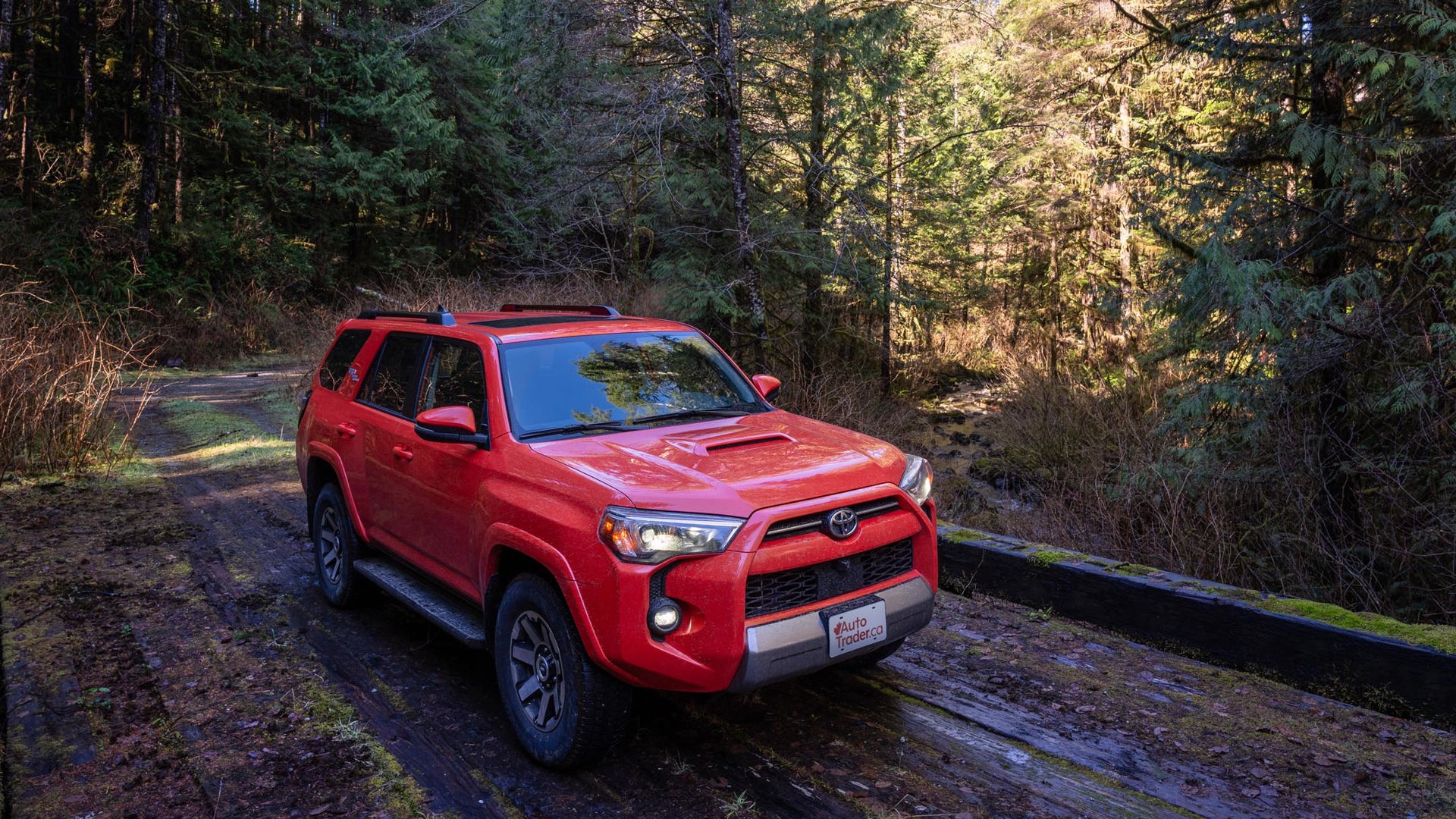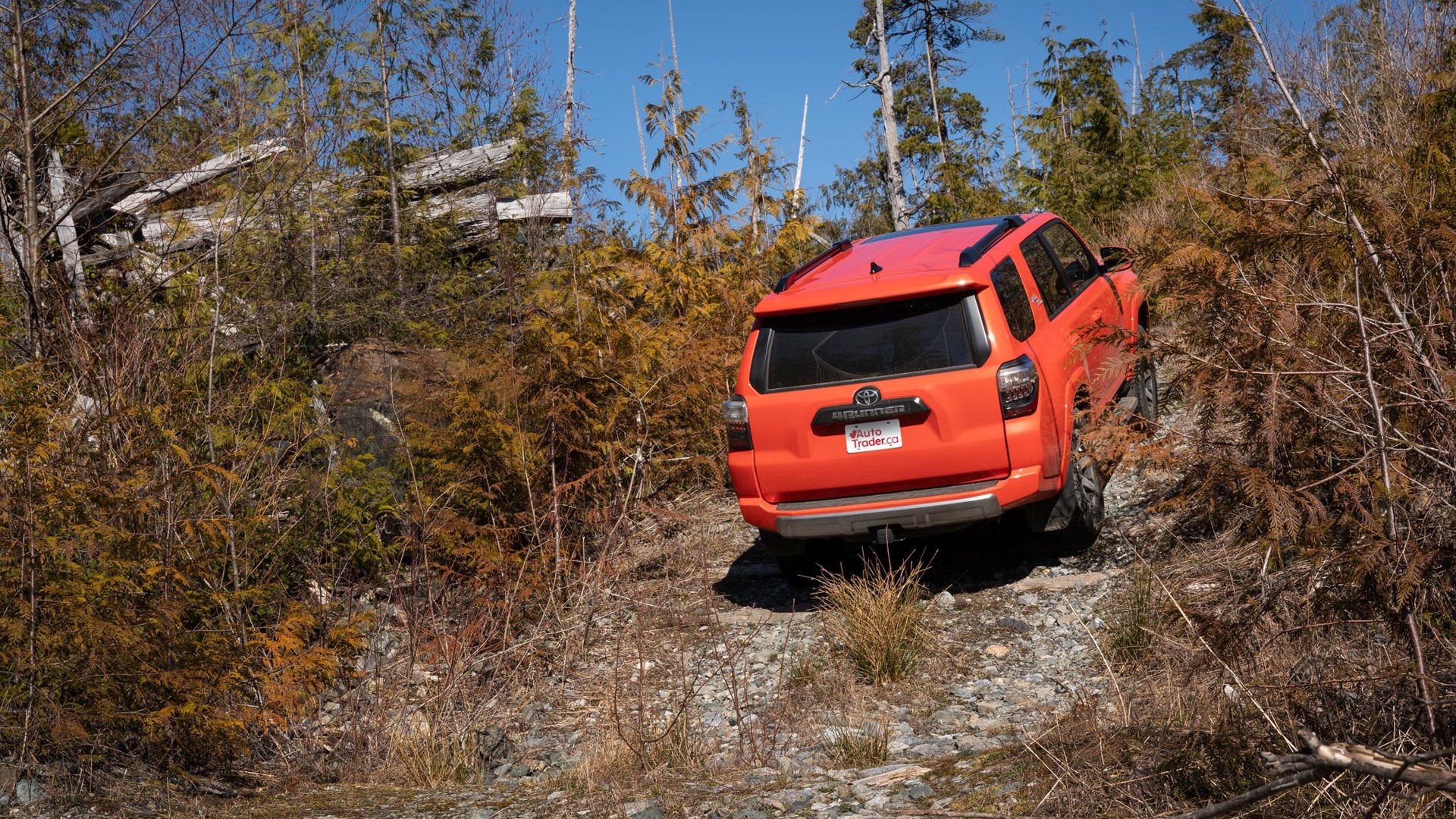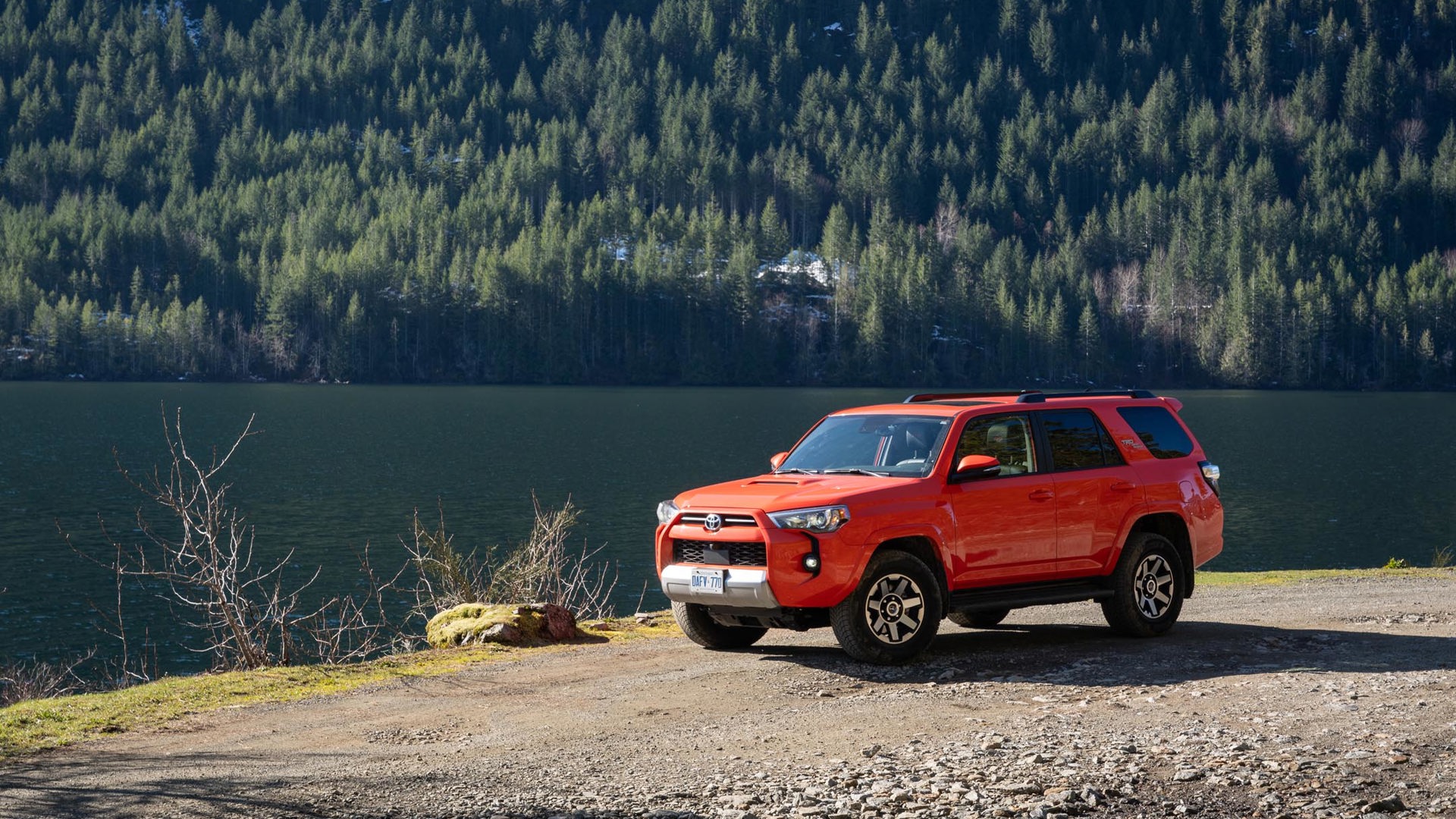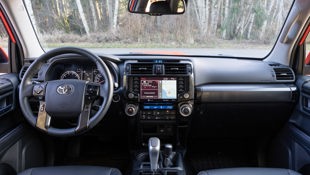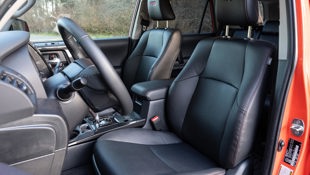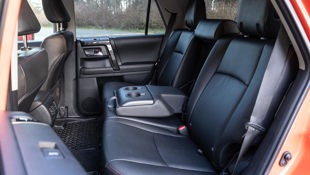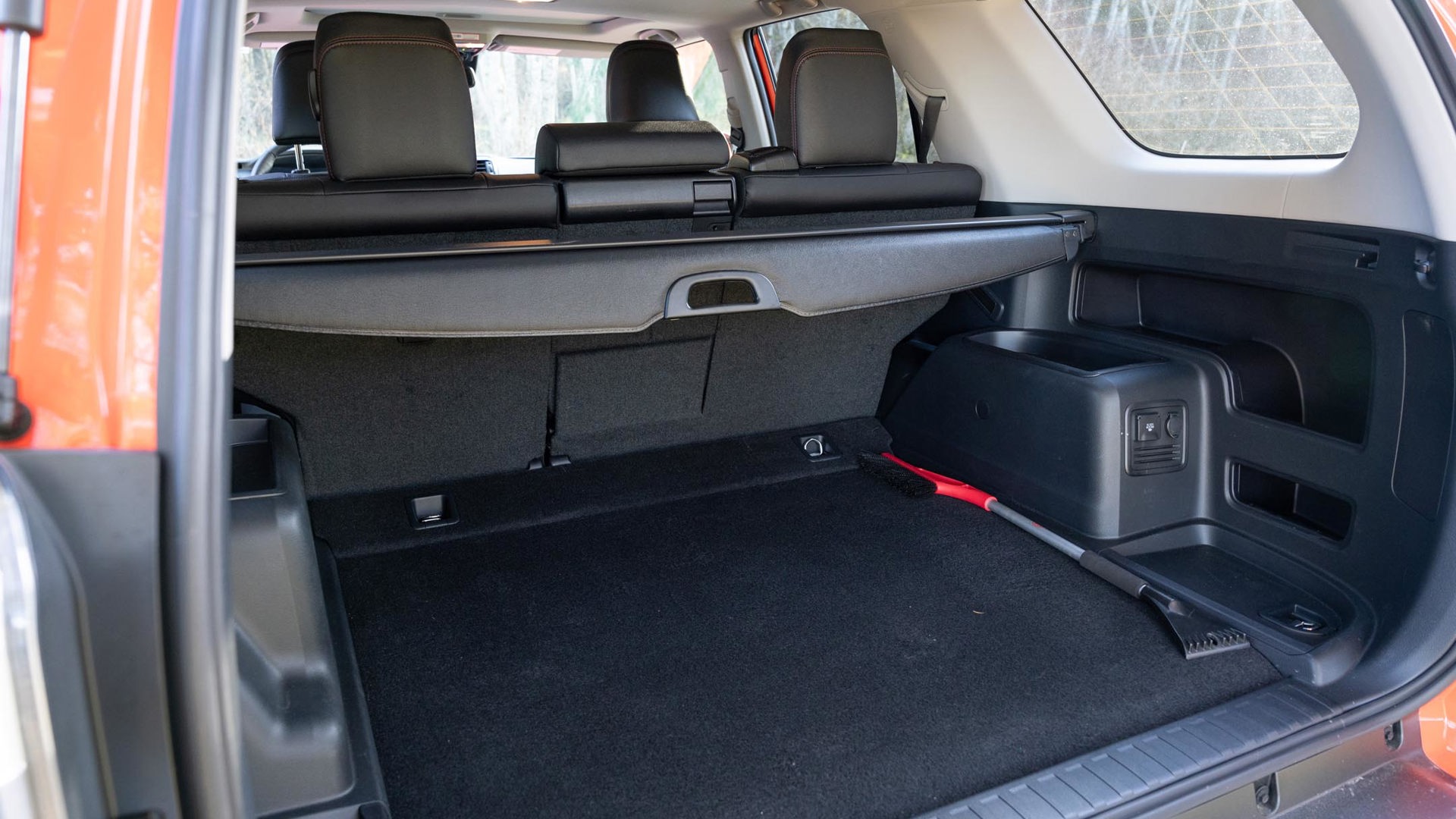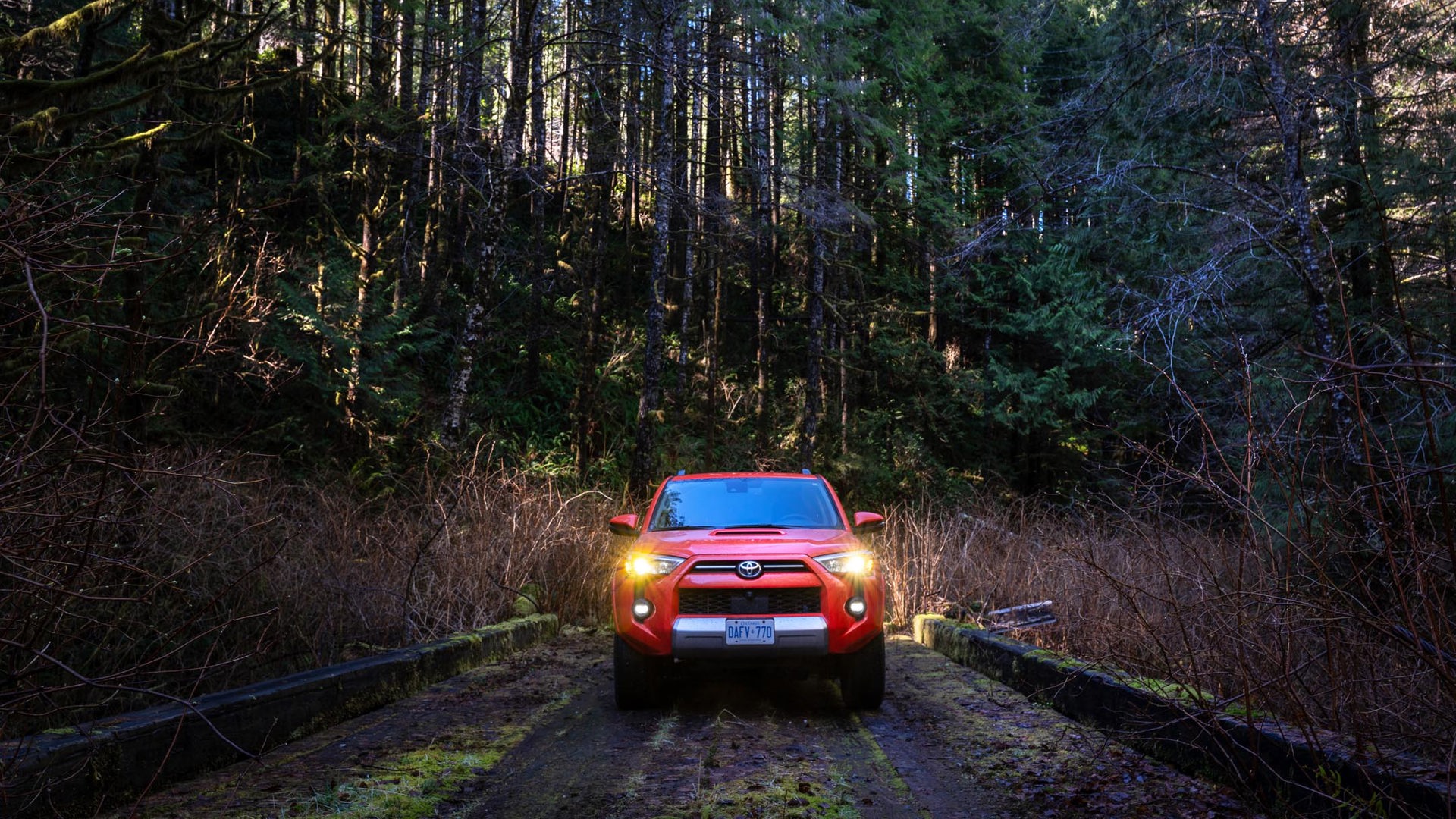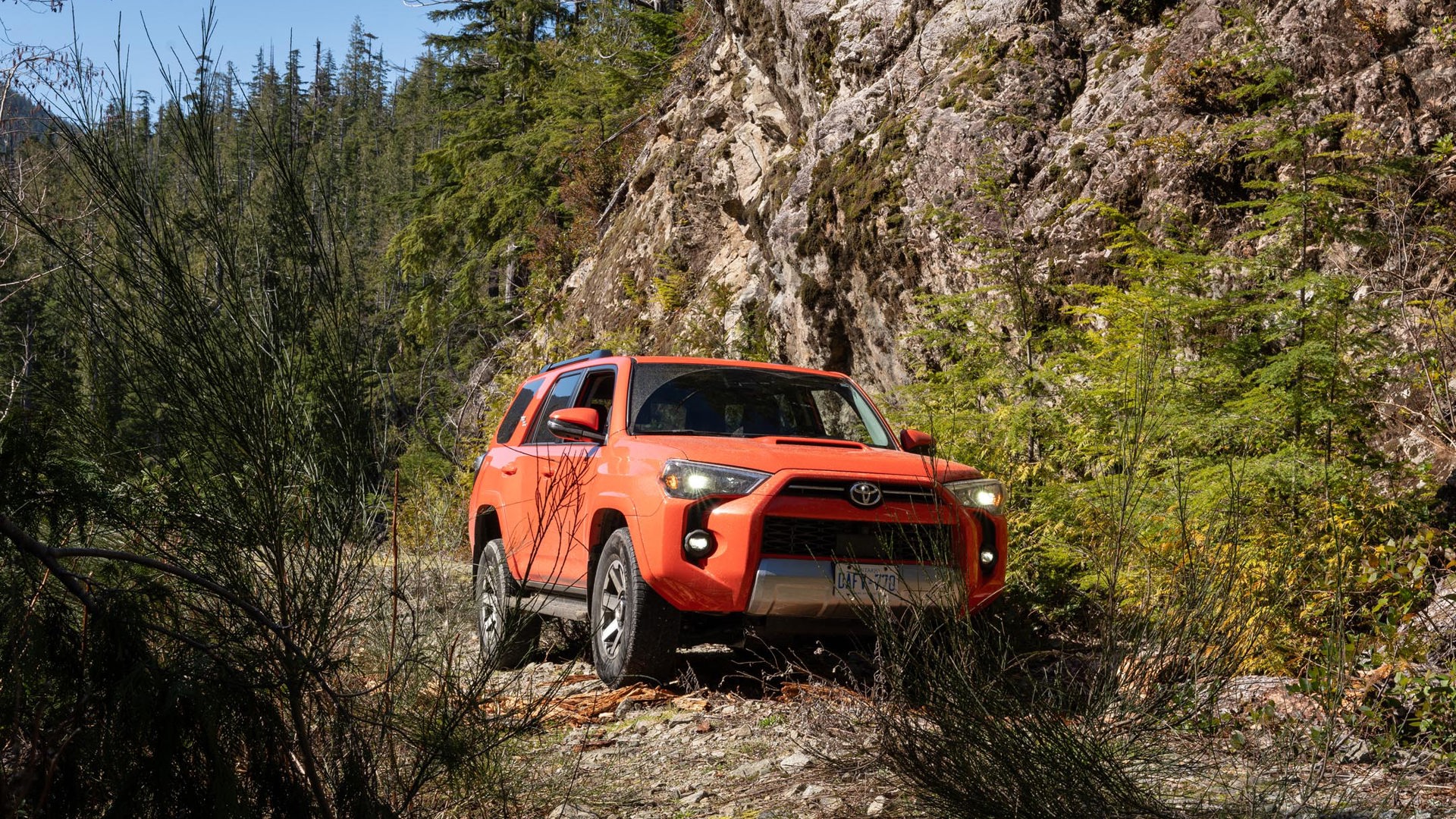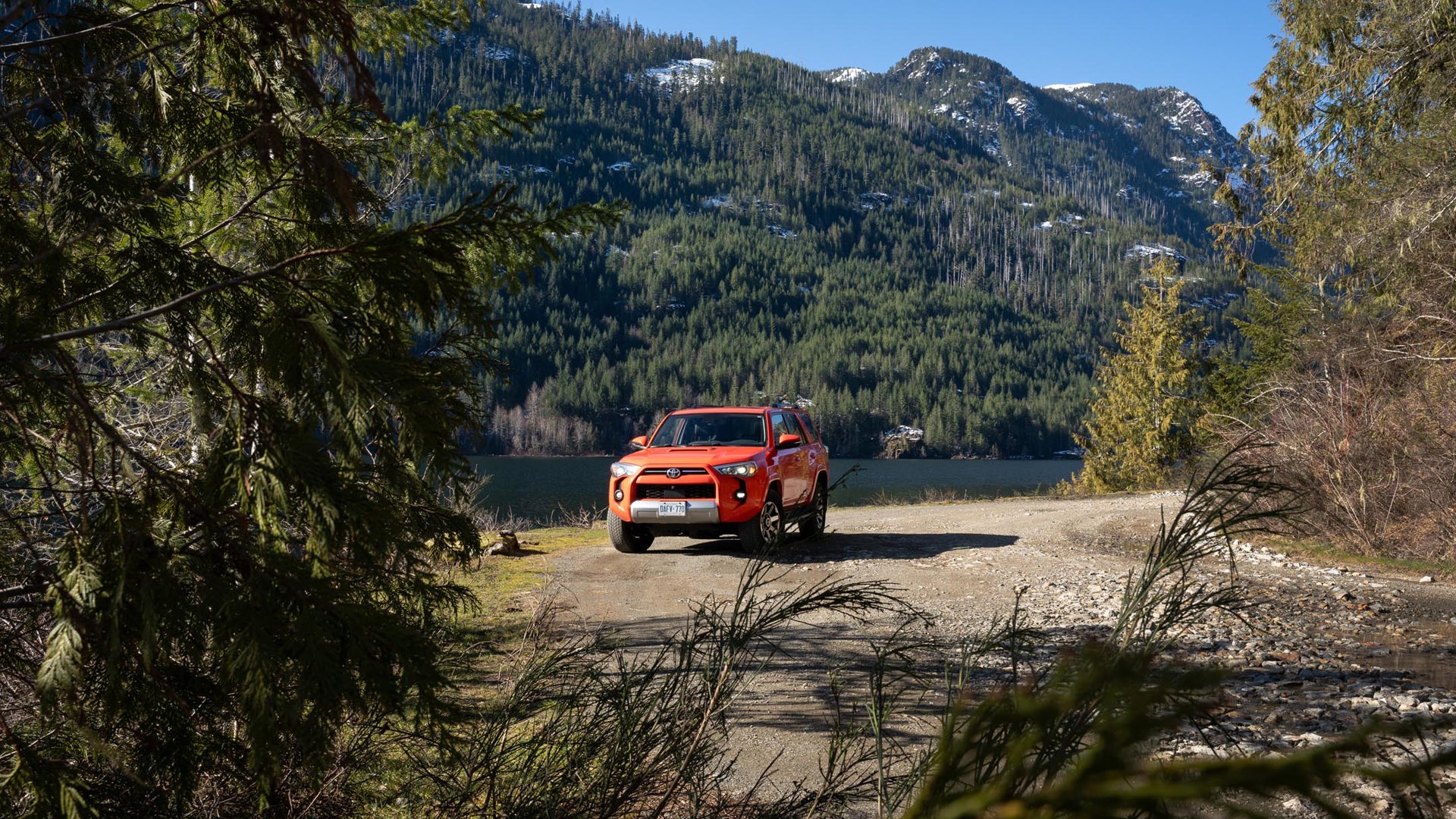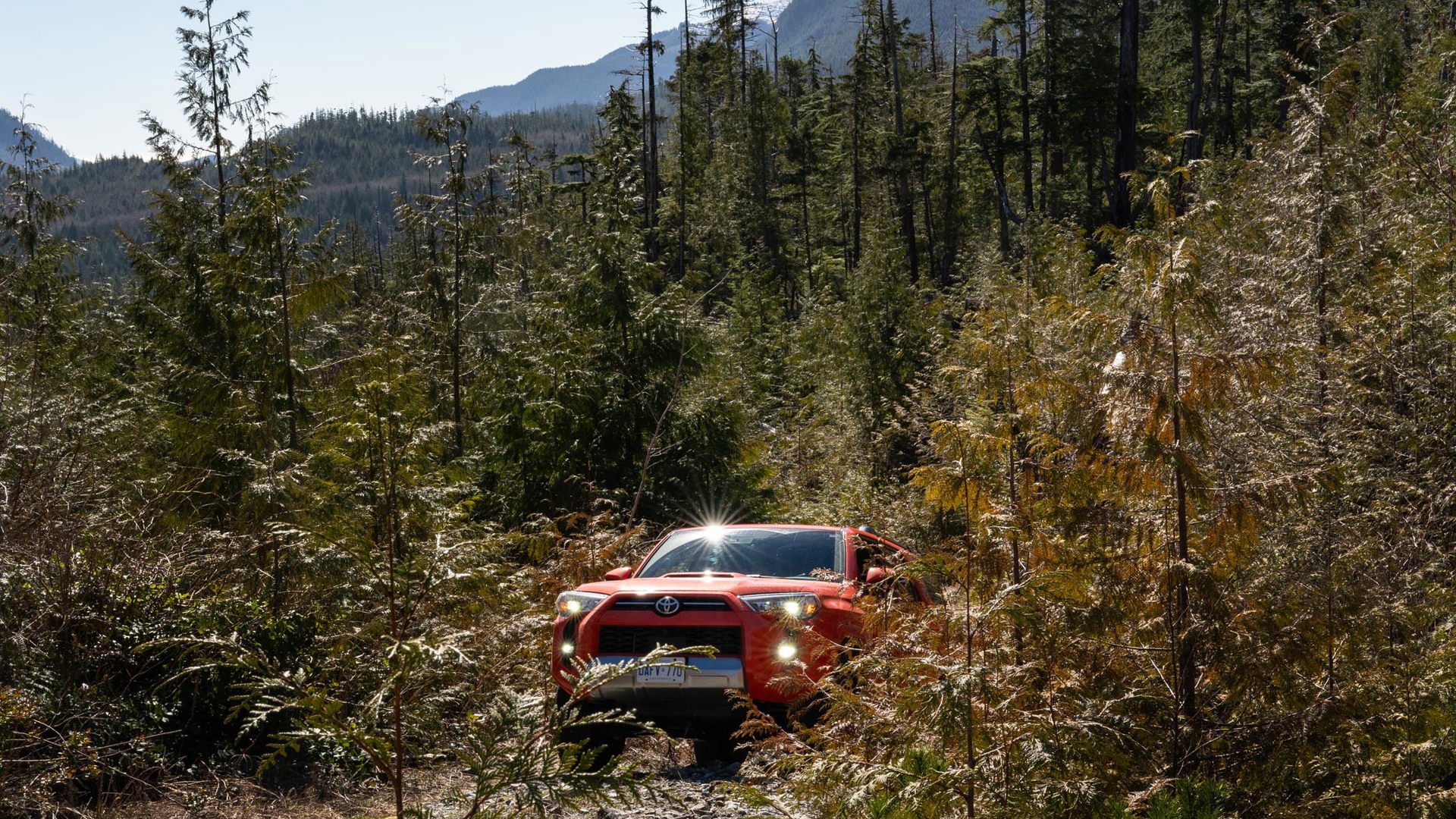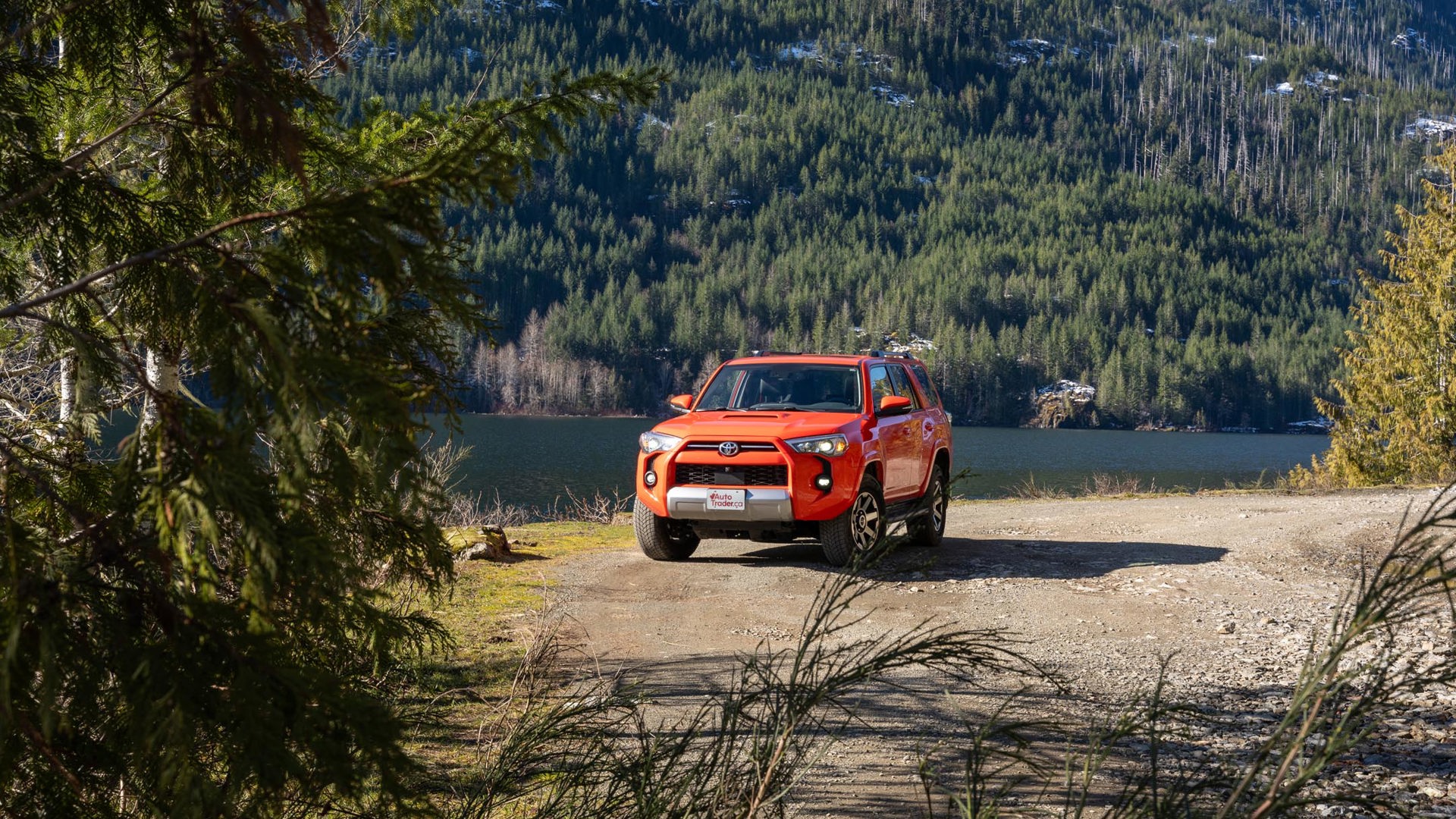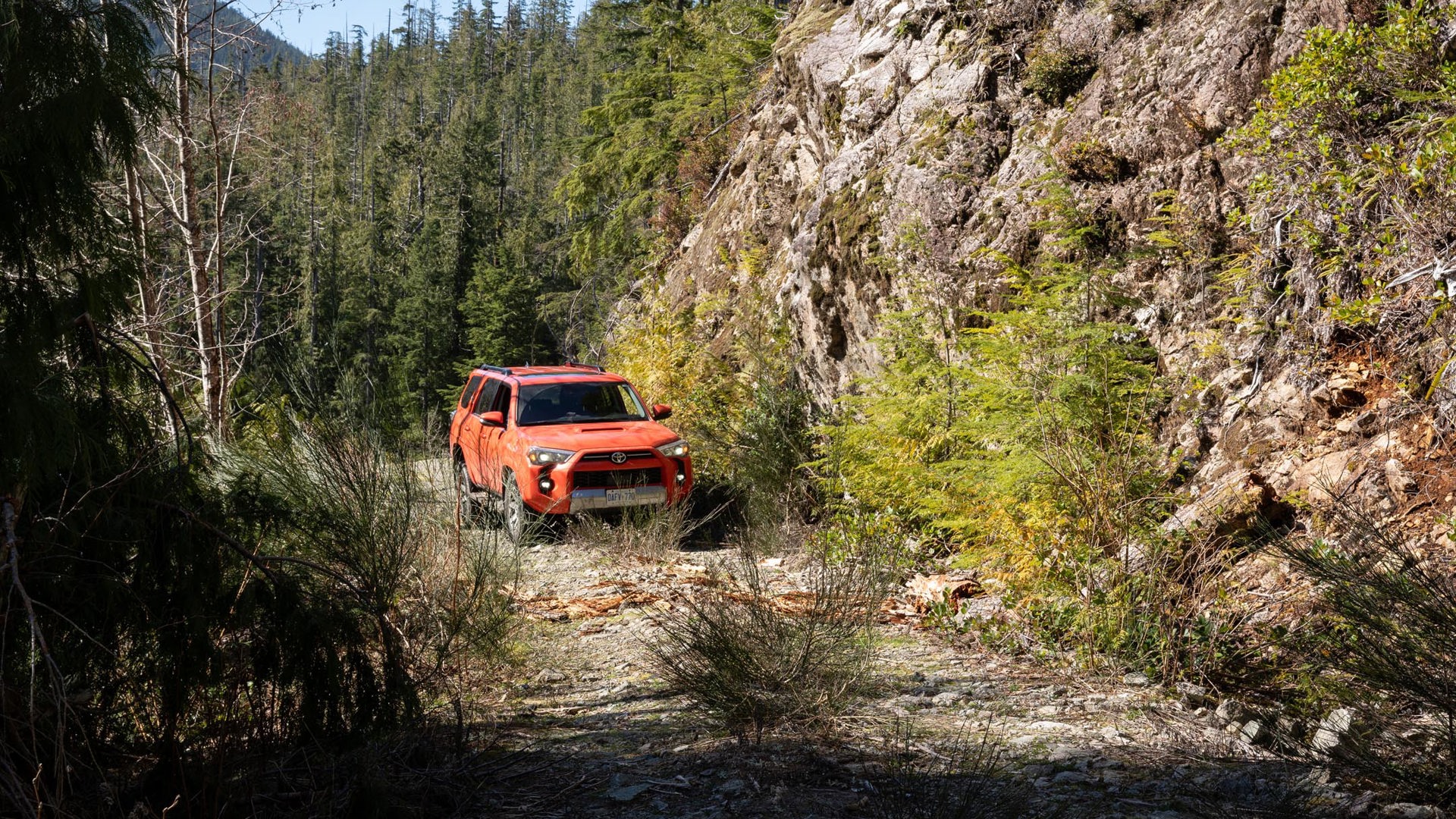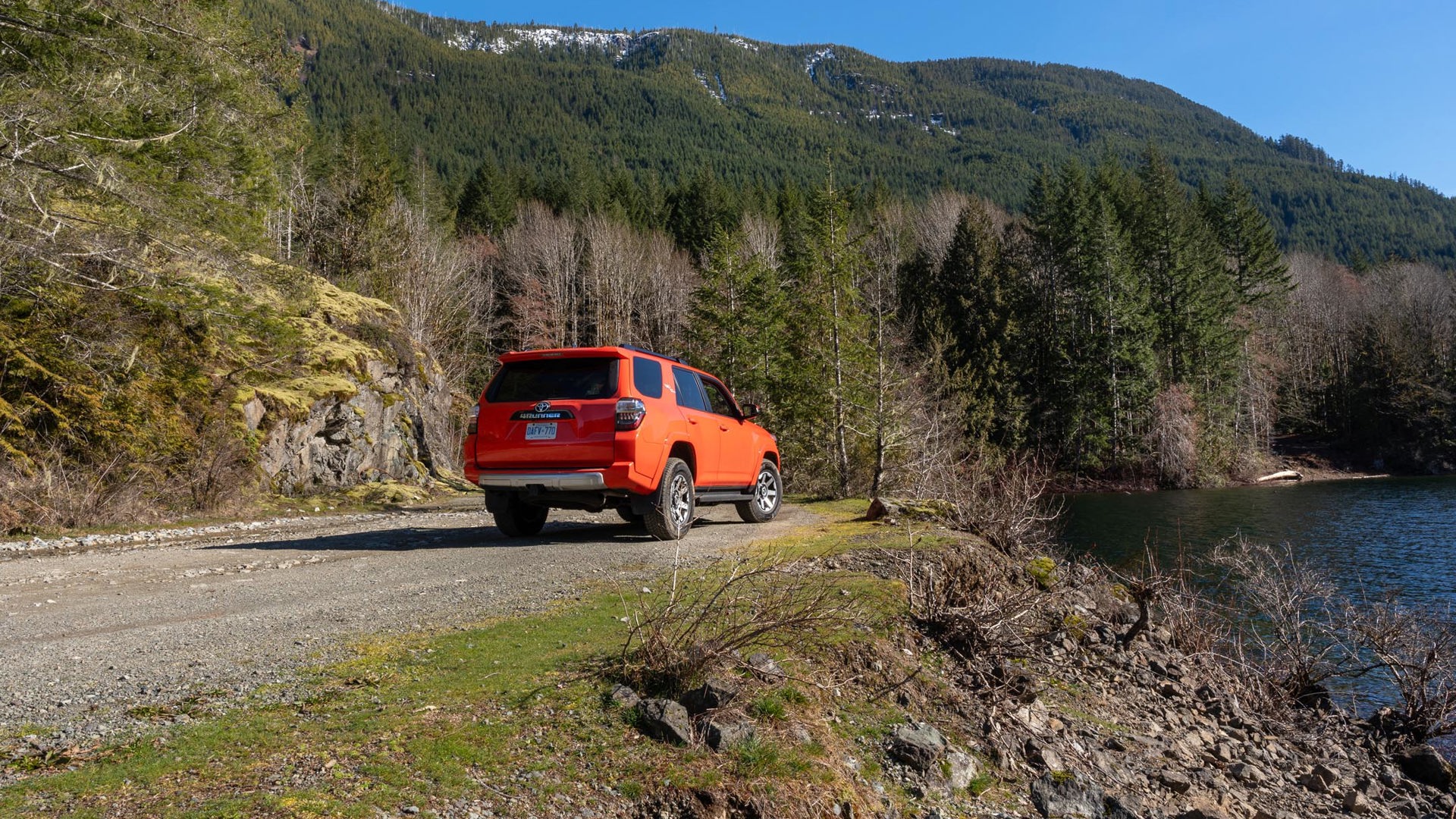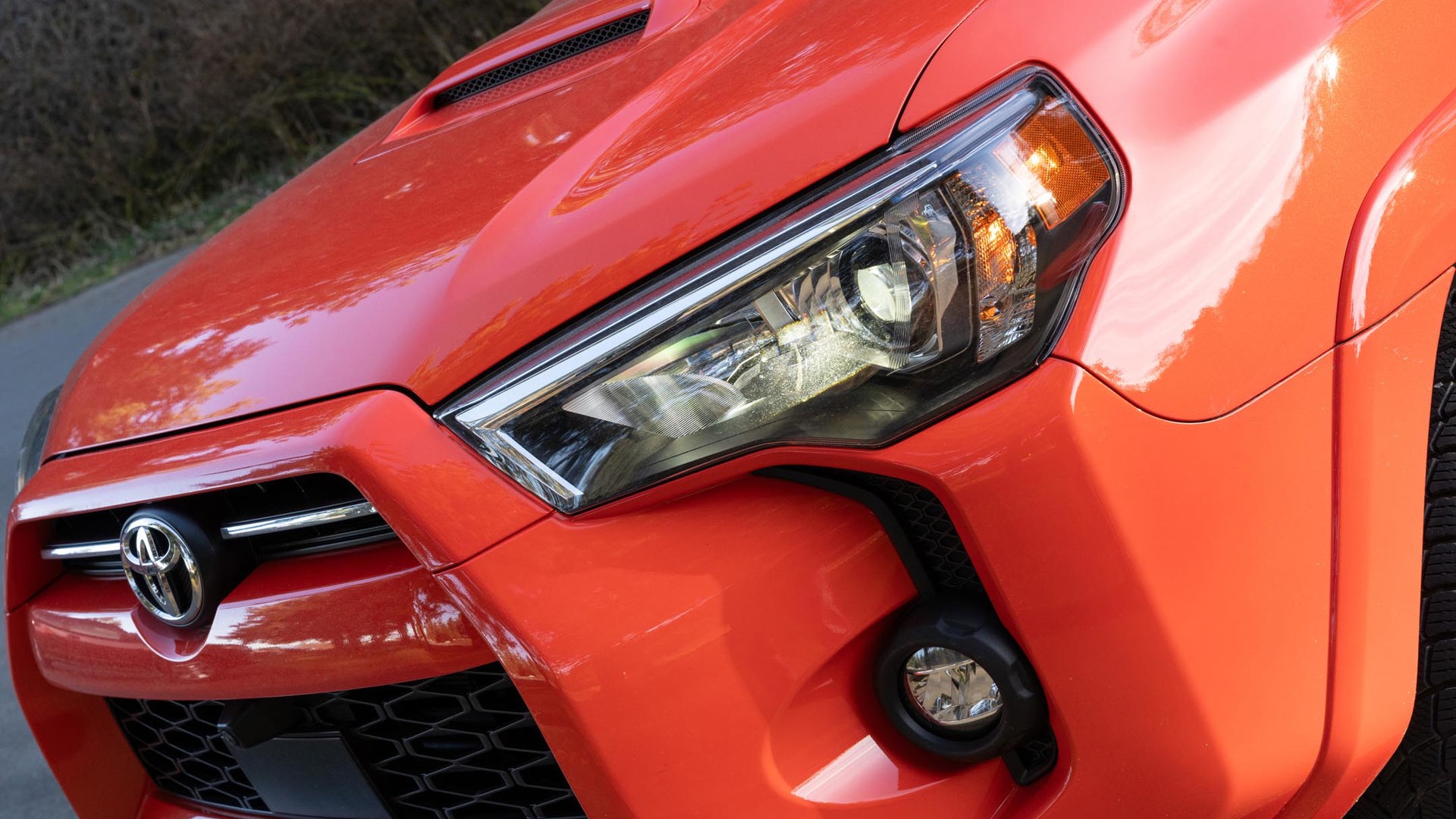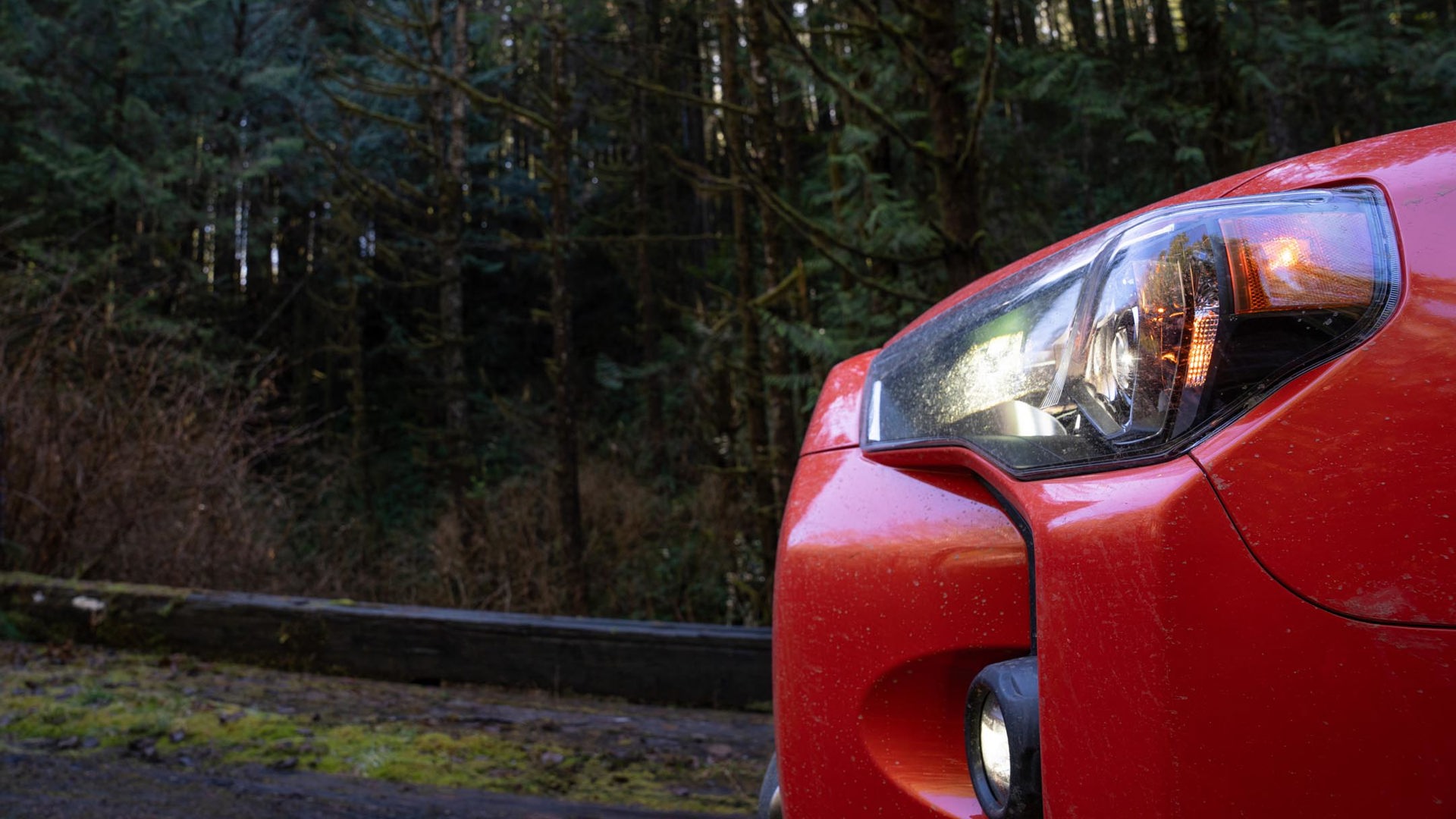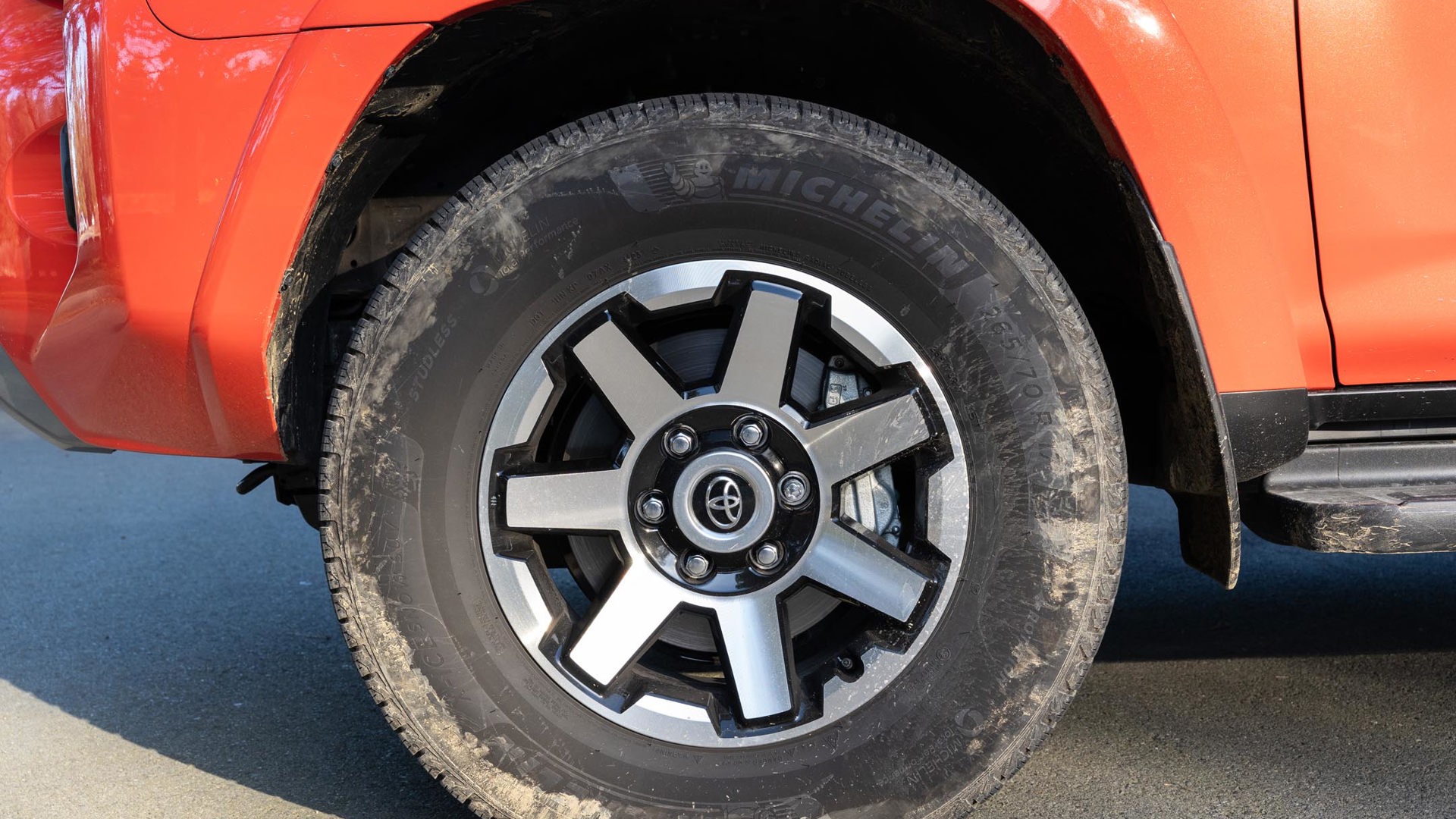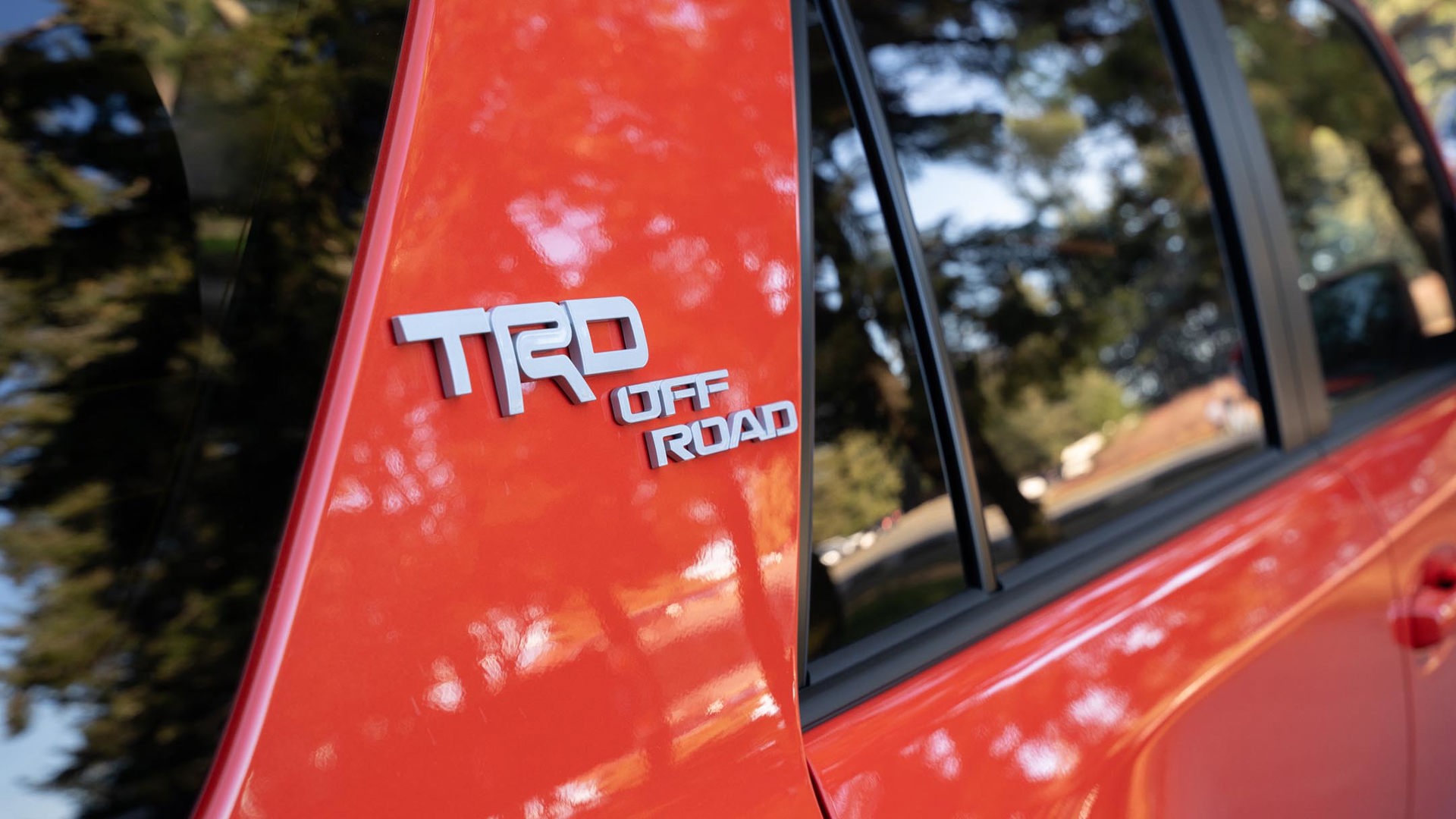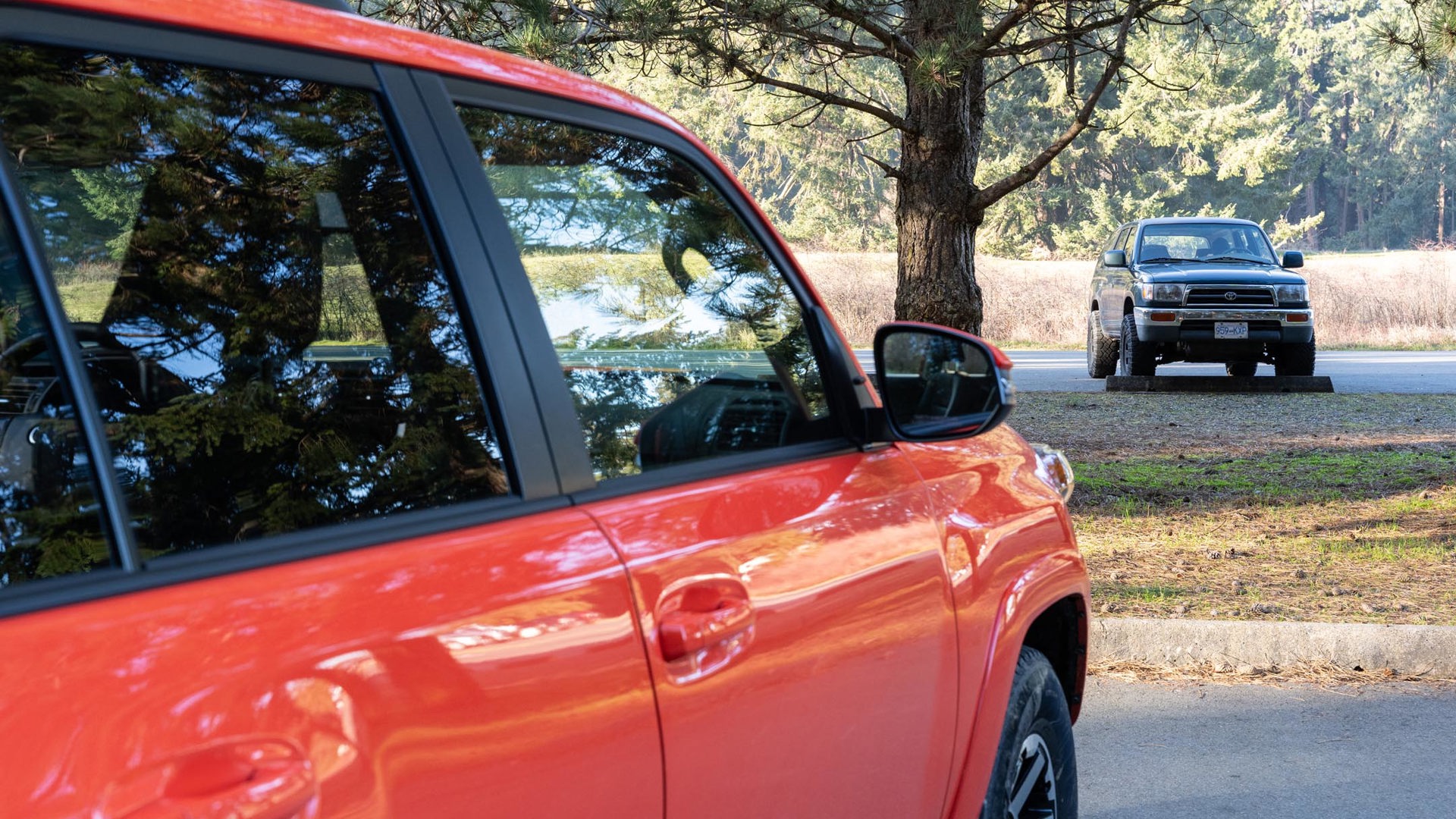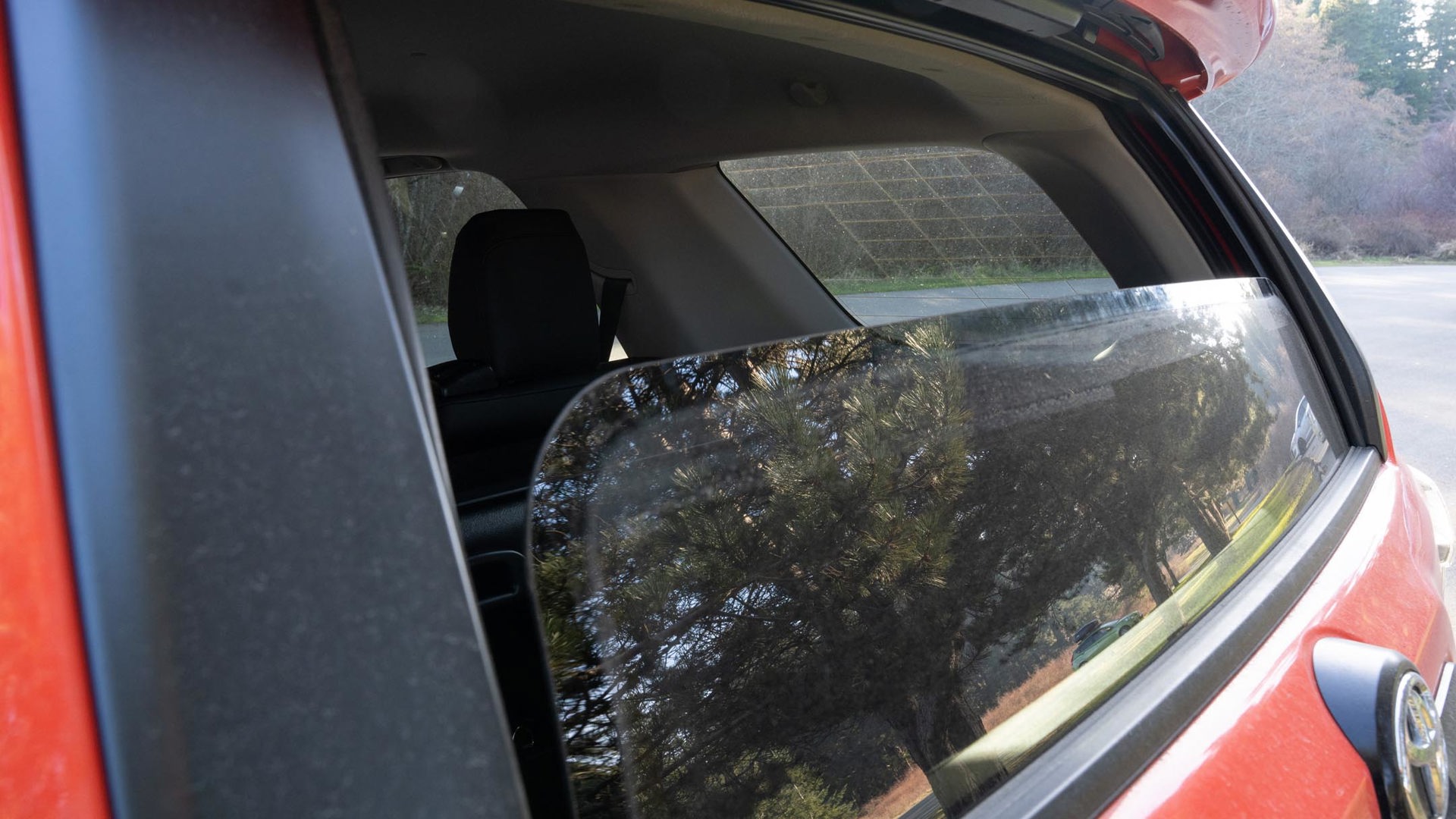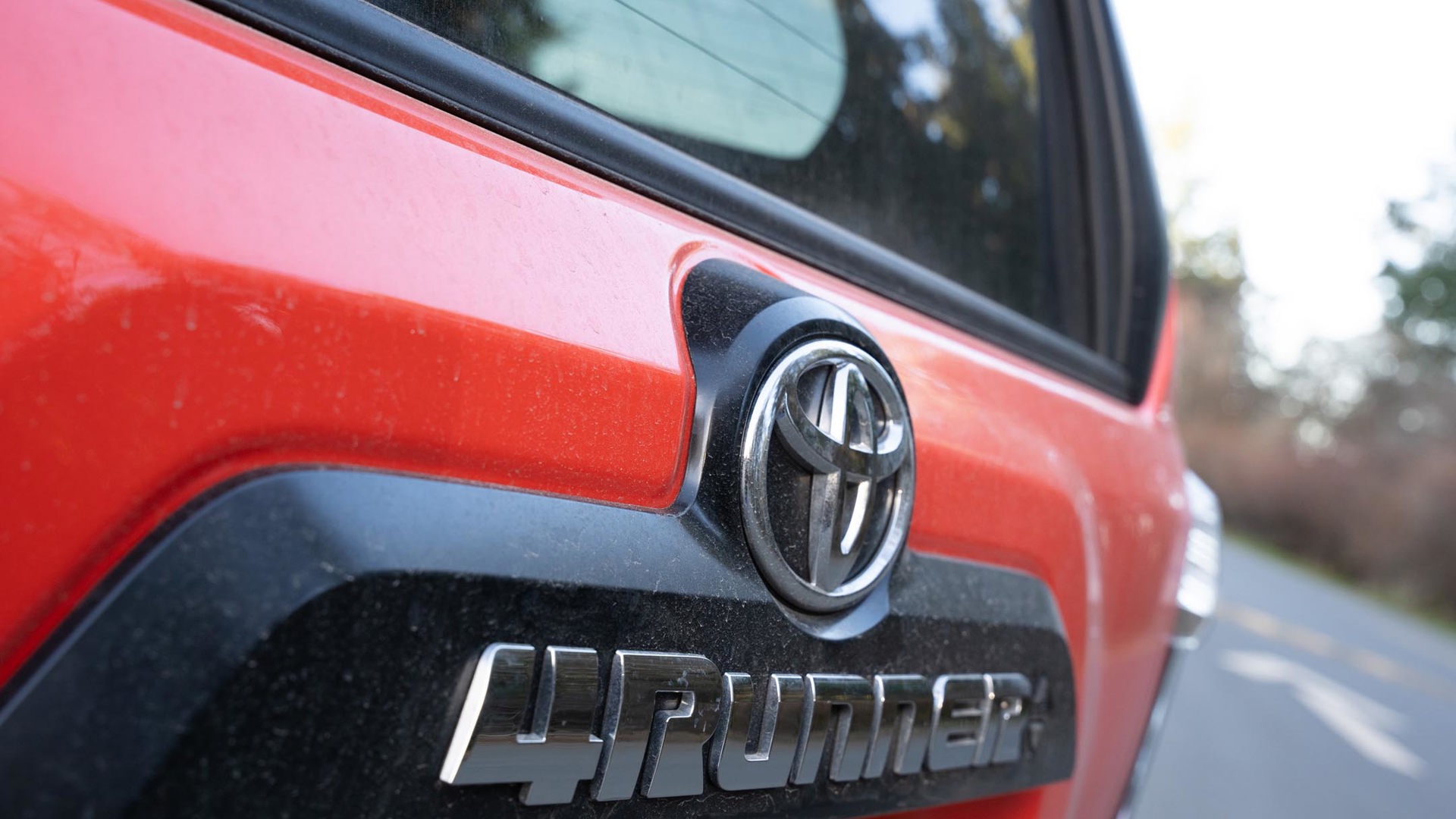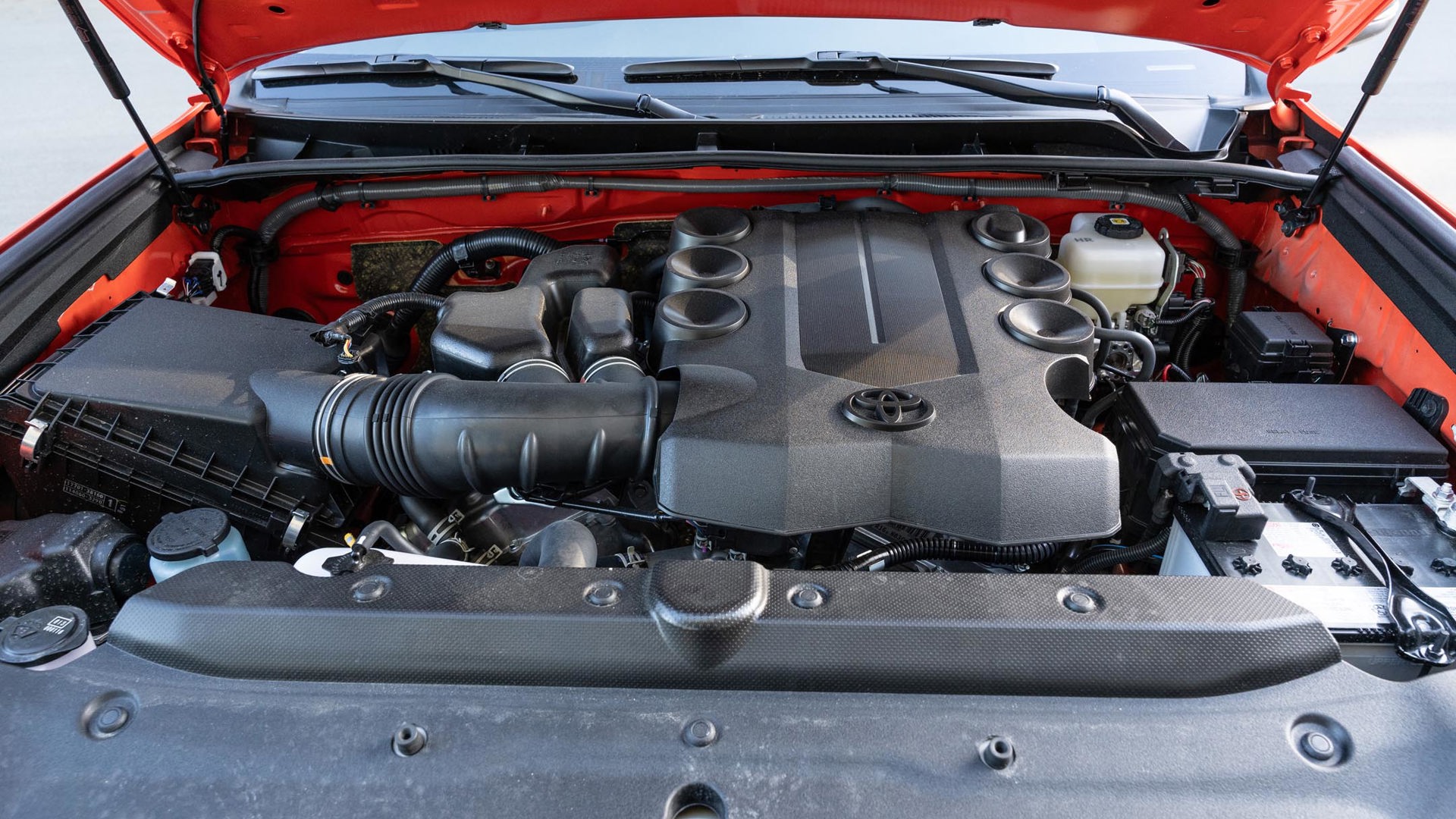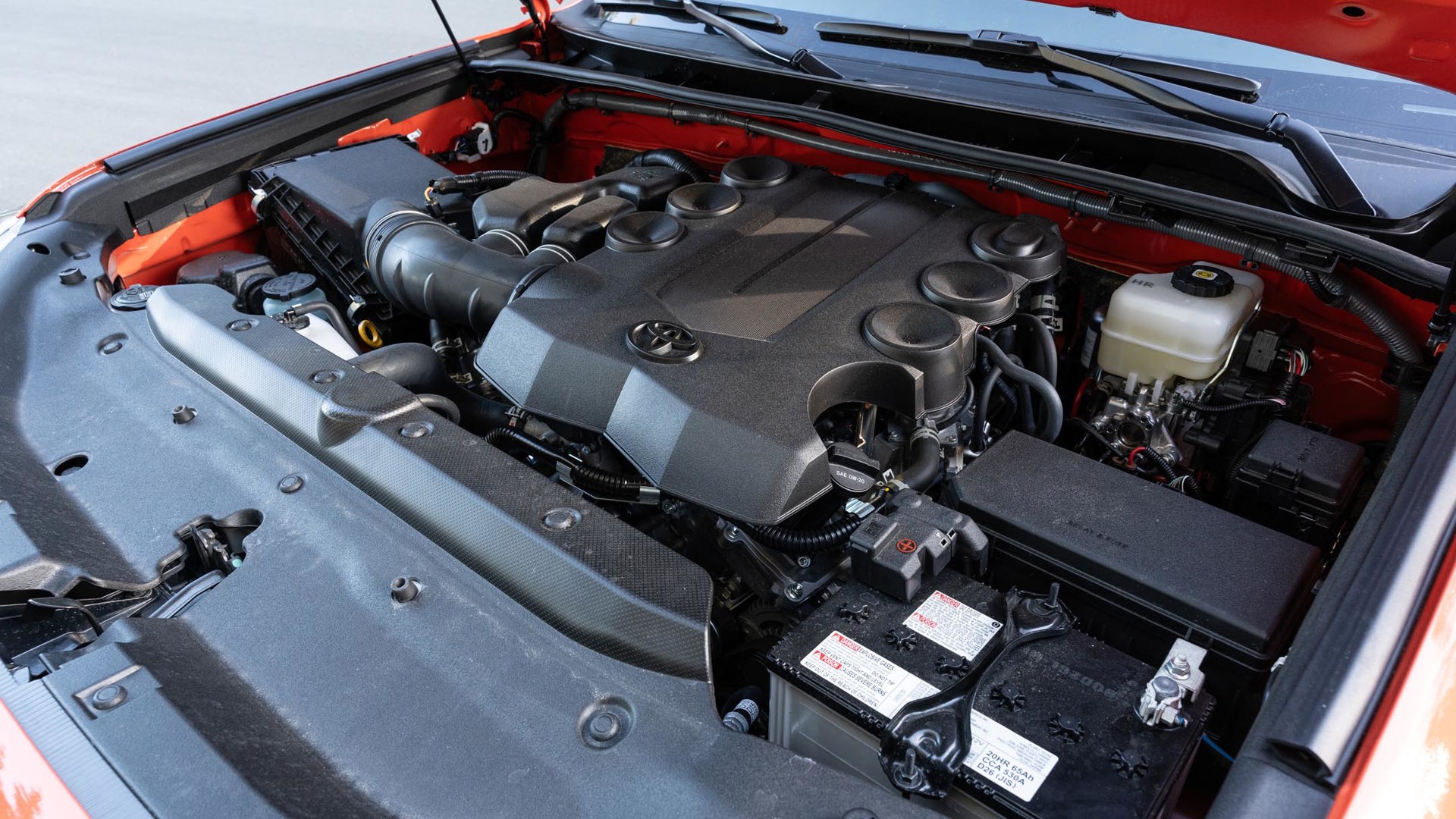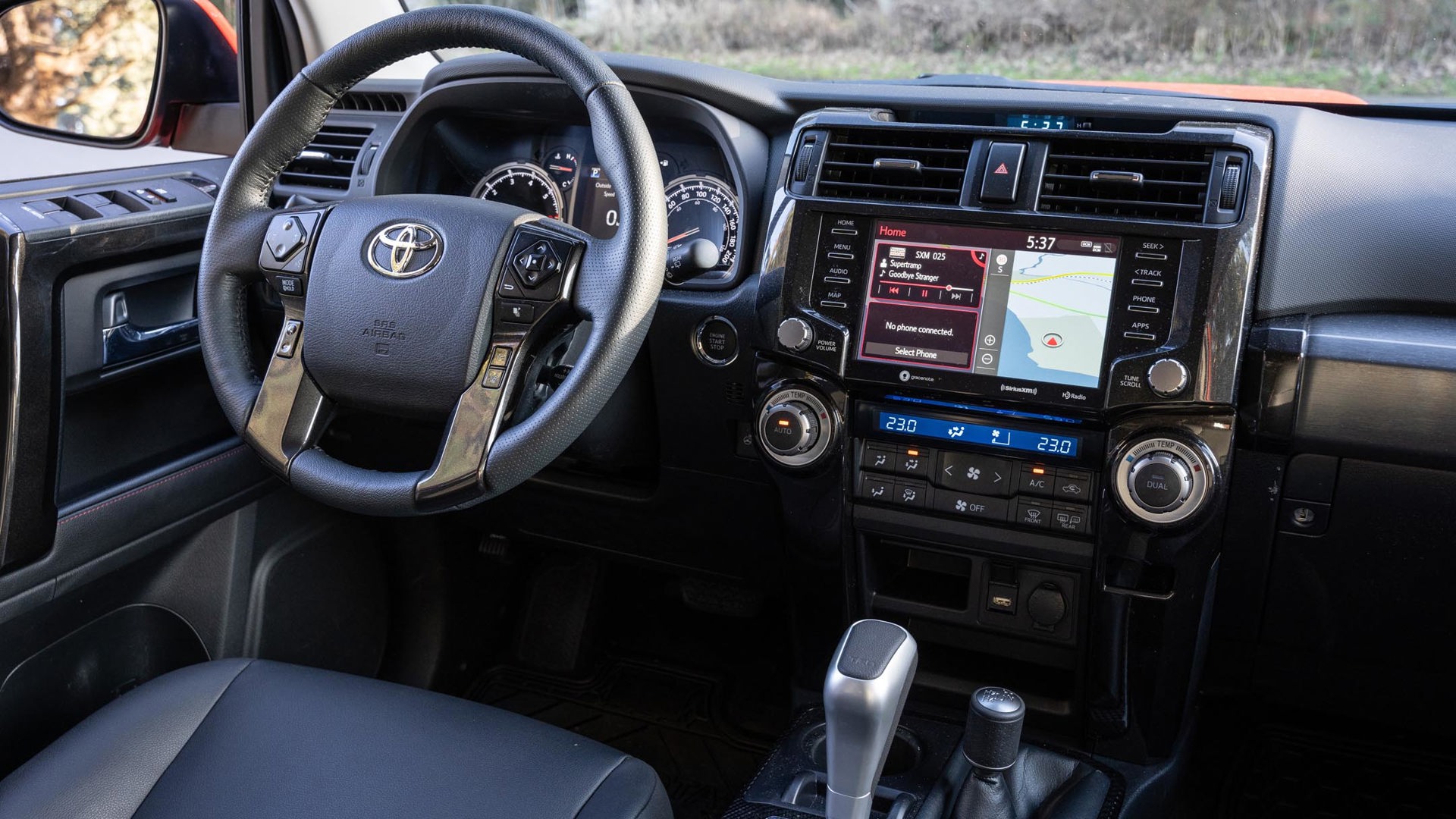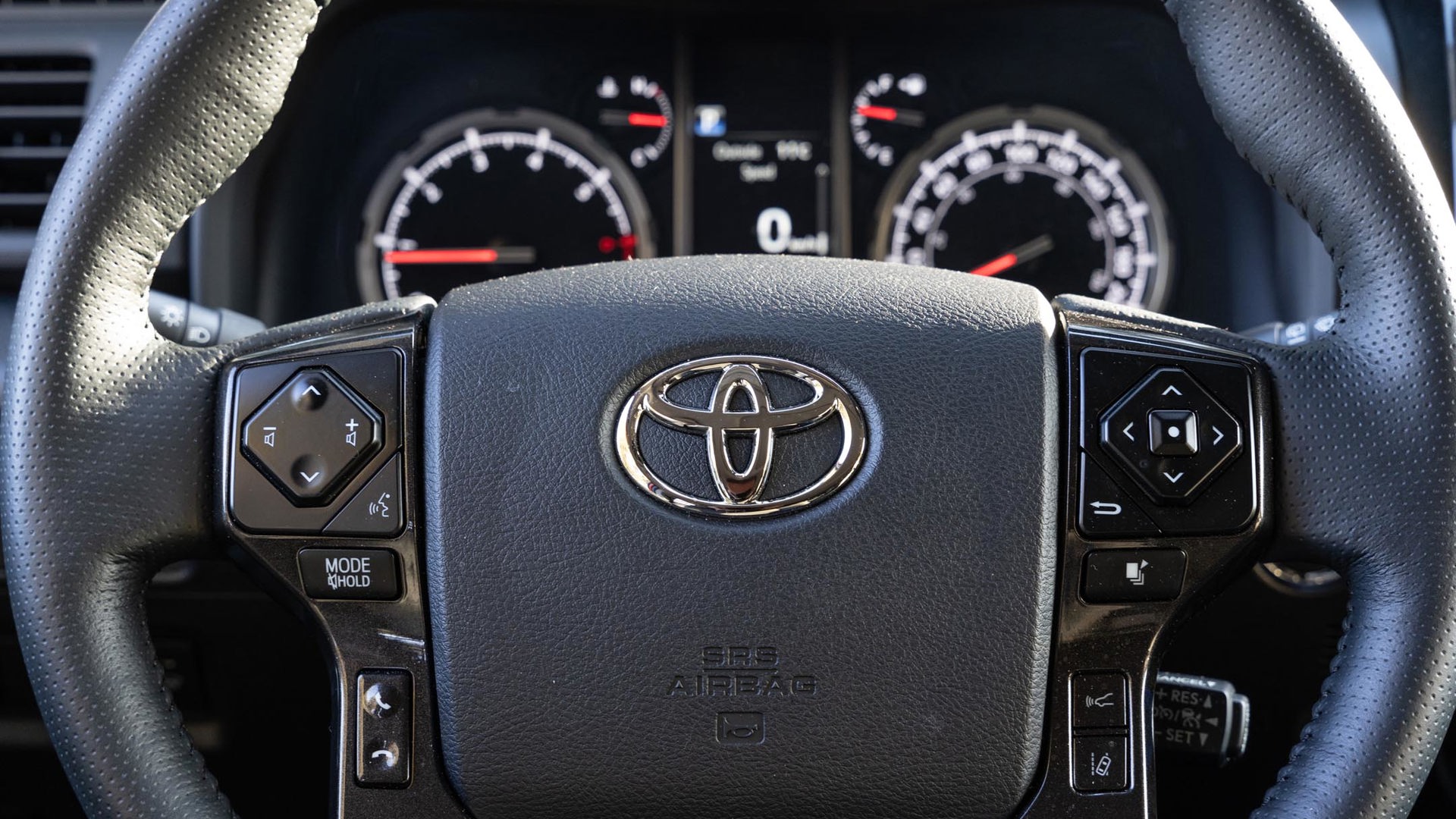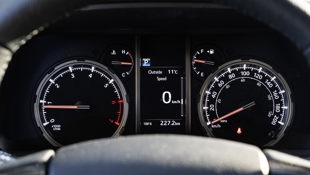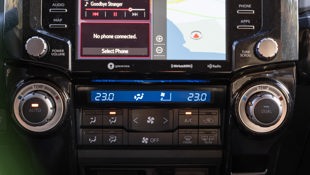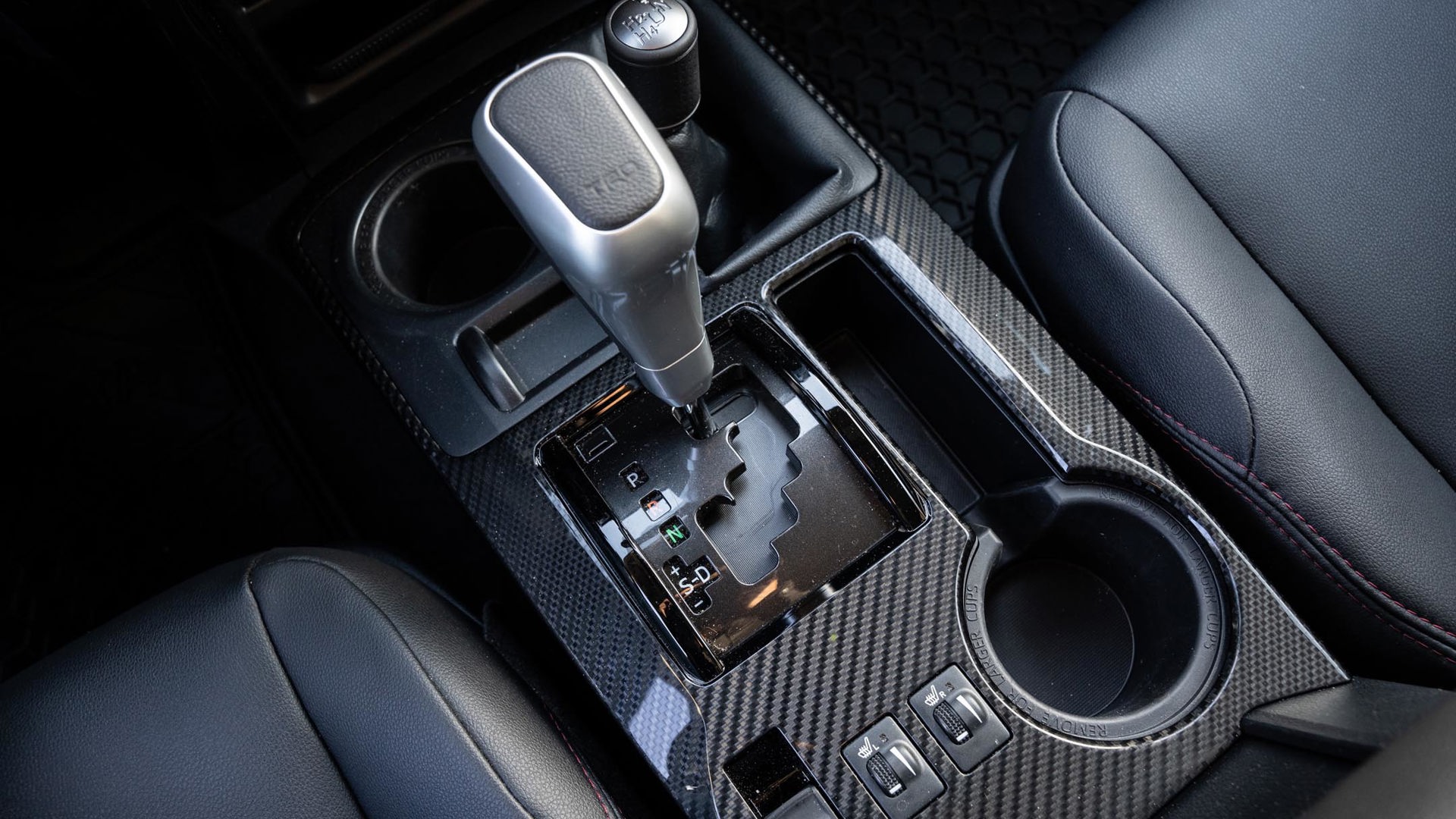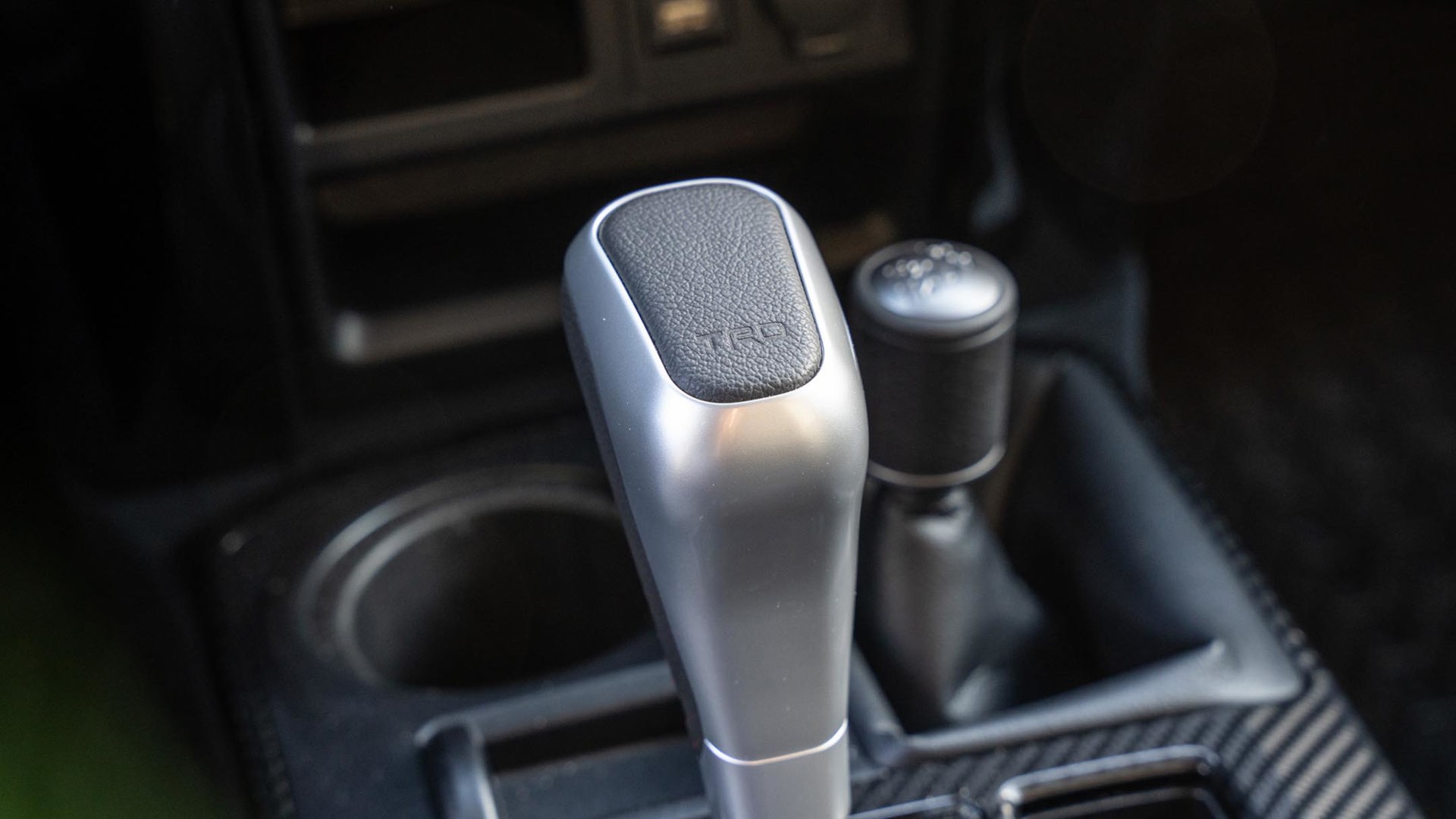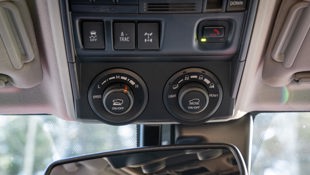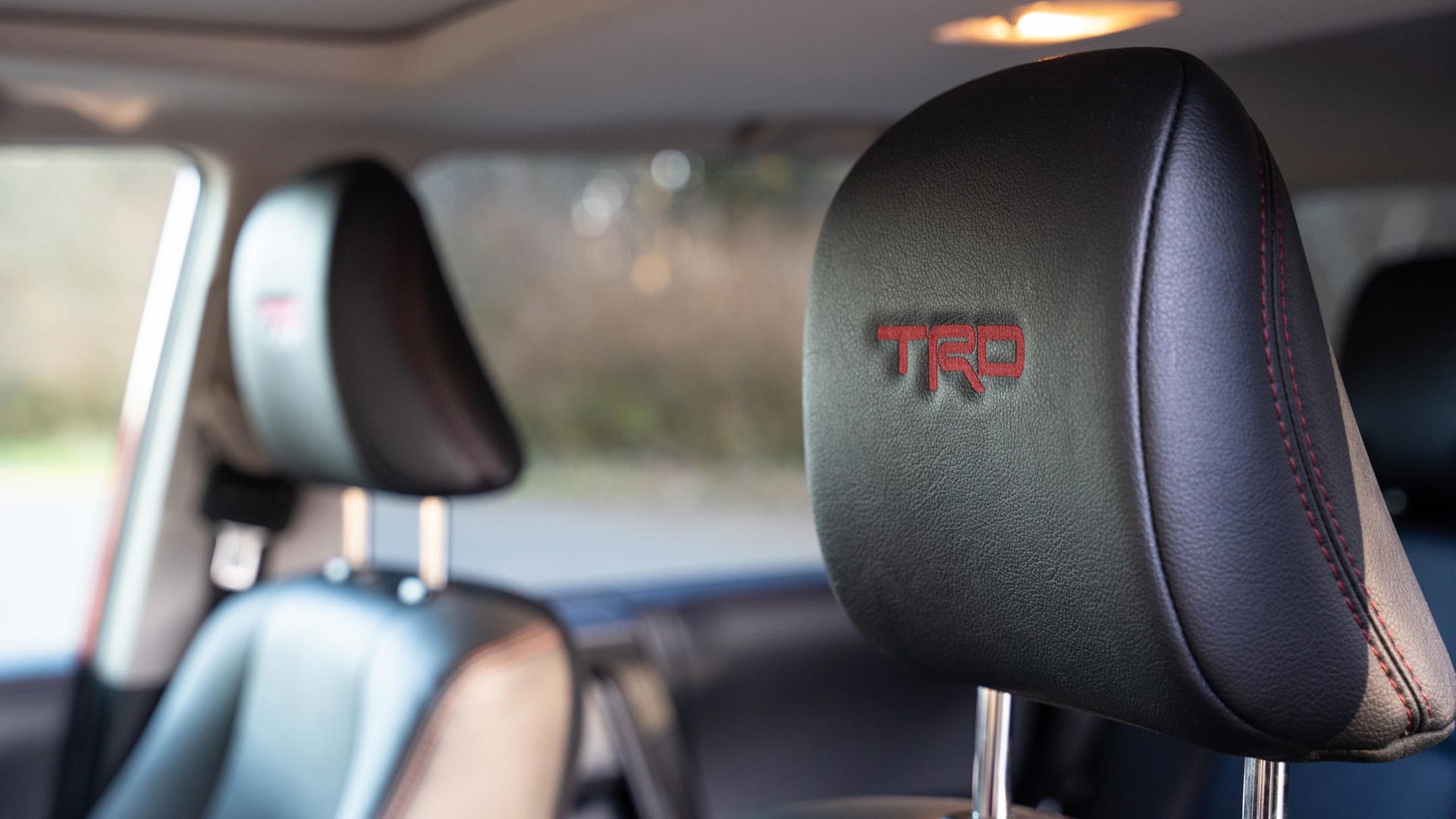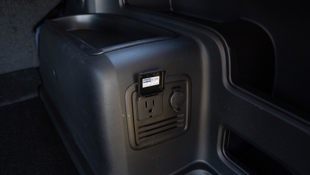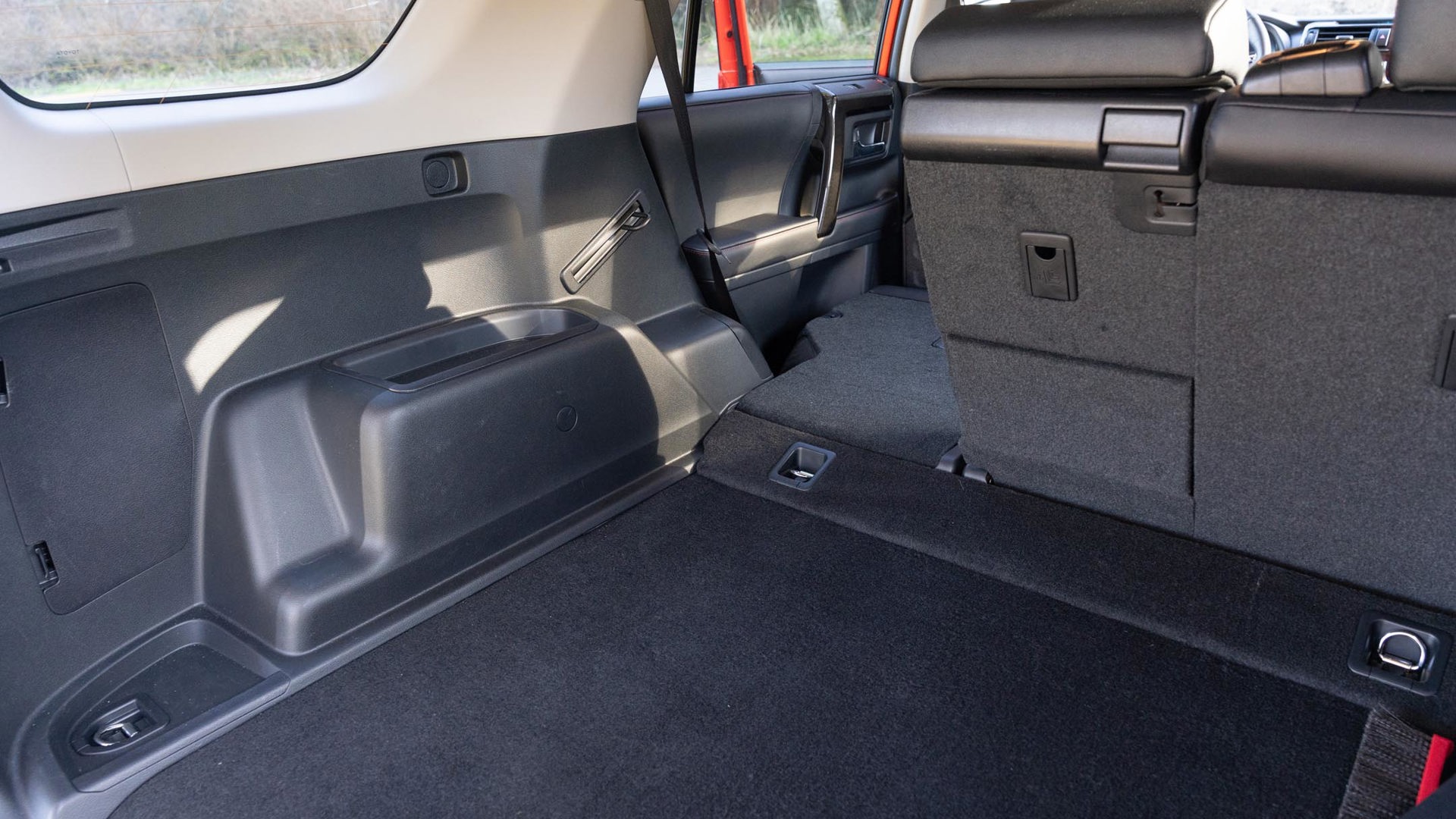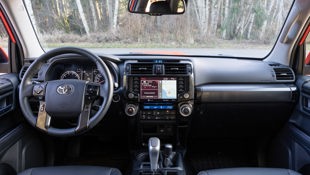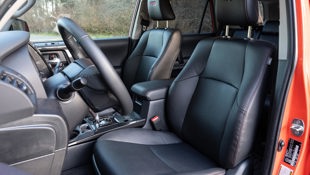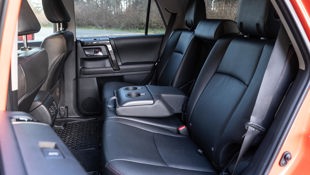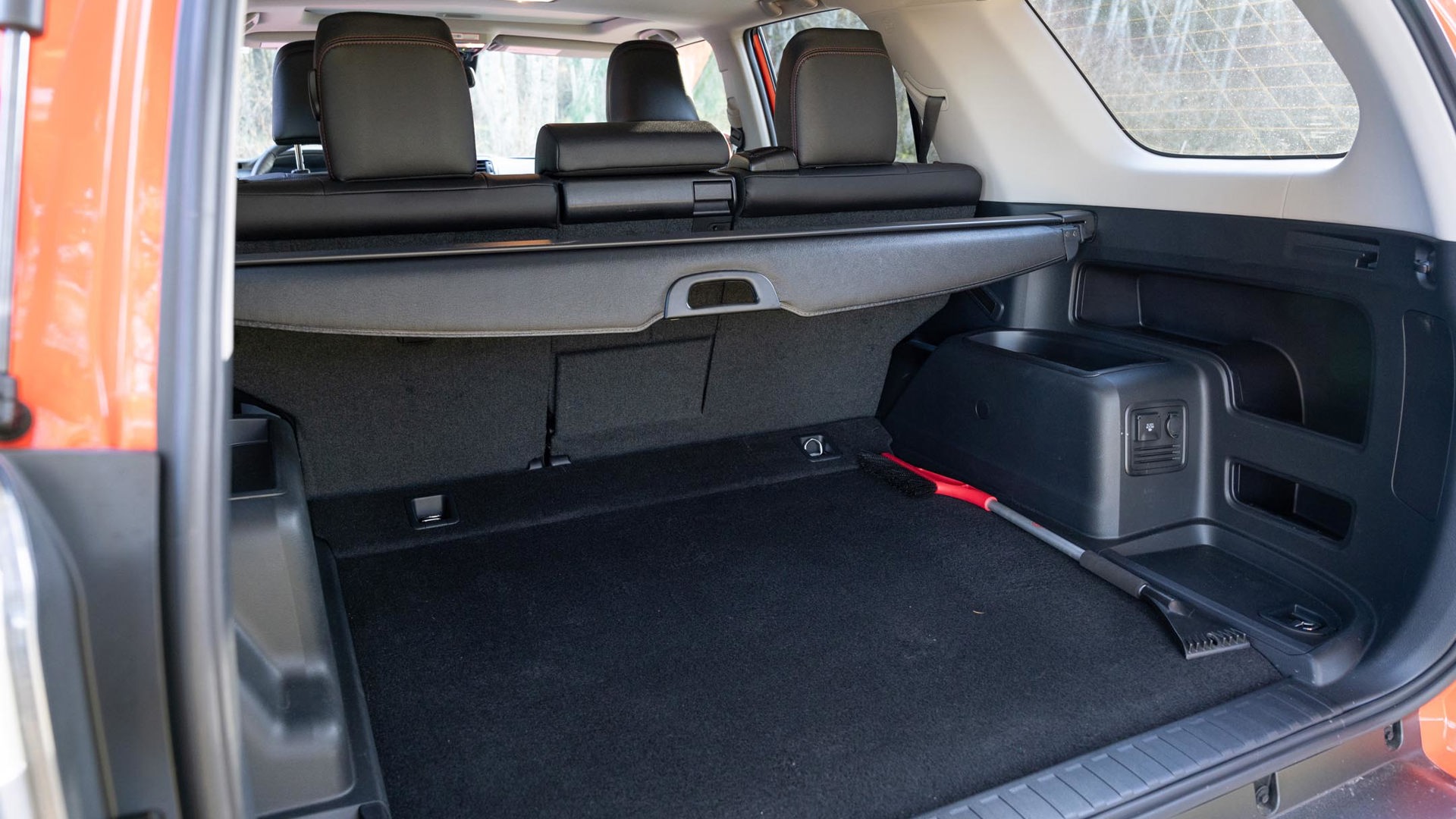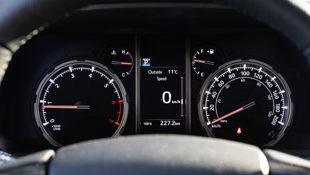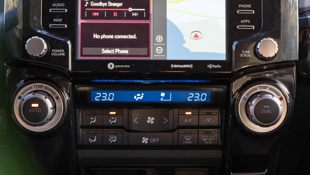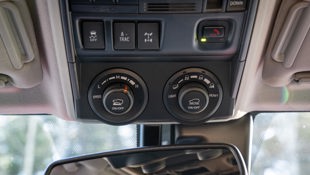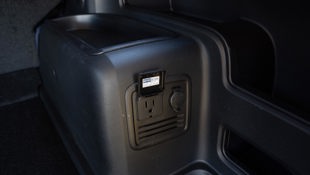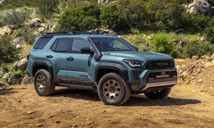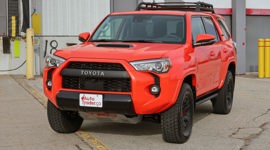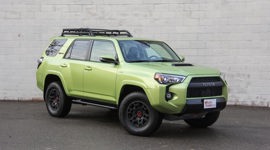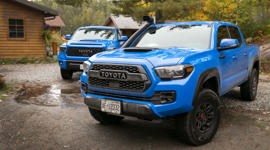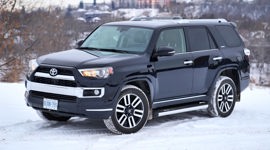 AutoTrader SCORE
AutoTrader SCORE
-
STYLING7/10
-
Safety7/10
-
PRACTICALITY8/10
-
USER-FRIENDLINESS8/10
-
FEATURES7/10
-
POWER7/10
-
COMFORT7/10
-
DRIVING FEEL7/10
-
FUEL ECONOMY6/10
-
VALUE7/10
If you’re looking for a four-wheeled time machine, look no further than the Toyota 4Runner – at least for now.
Launched nearly 15 years ago, the fifth generation of Toyota’s venerable body-on-frame SUV is the oldest vehicle currently on sale in Canada, with a well-earned reputation for being one of the toughest, most-rugged, and longest-lasting machines on the road or the trail.
And while that’s soon to change with a redesigned version set to arrive for next year, the 2024 Toyota 4Runner proves that the if-it-ain’t-broke mantra can easily apply in the auto industry. Ultimately, though, it all comes down to the execution.
Power: 7/10
Nothing about the 4Runner takes a driver back in time as much as its drivetrain. The 4.0L V6 isn’t augmented by turbochargers or small electric motors, instead asking for some revs (5,600 of them, in fact) to wring out its peak 270 hp. It needs 4,400 rpm to reach its peak 278 lb-ft of torque, which can make the 4Runner feel a little long-winded and wheezy compared to the boosted units used by rivals.
The 4Runner does just fine around town and still has enough oomph on tap at highway speed to execute a pass without having to schedule it too far in advance. If the standard automatic transmission had more than five speeds, it would help the 4Runner stay in the heart of its power; but at least the gear changes are smooth, and it intuitively downshifts to utilize the engine’s compression for braking – handy on mountain declines on the way home from the trail. Plus, unlike the system in the Jeep Wrangler that can be finicky, shifting the 4Runner’s transfer case between high- and low-range gearing is always a precise operation.
Fuel Economy: 6/10
Having only five gears also takes its toll on the 4Runner’s fuel consumption. Its city rating of 14.8 L/100 km is especially dire, improving somewhat to 12.5 on the highway for a combined rating of 13.8.
A mix of highway driving from Nanaimo, B.C., to Tofino and back, along with a few hours spent exploring some logging roads netted an overall average during this test week in the low 12s. While that’s not great, it’s on par with other serious off-roaders like the Ford Bronco Badlands.
Driving Feel: 7/10
We’ve often pined for old-school hydraulic steering for its better road feel than the electrically-boosted systems in modern machines. The 4Runner’s hydraulic rack may offer more feedback, but it’s filtered out through a slow ratio and tires with squishy sidewalls in the case of this tester and its TRD Off Road package.
Driving the 4Runner at speeds above the posted limit on winding, undulating mountain roads became daunting as it keeled over nautically in the corners and threatened to kiss the pavement with significant nose-dive under braking. Those accustomed to contemporary SUVs may find this behaviour hair-raising at first, as reactions always feel a half-beat behind driver input at speed. Even still, at highway speed, the 4Runner doesn’t need the constant steering corrections a Wrangler requires, instead tracking straight and true, making it a more relaxed cruiser and better road-trip machine.
Of course, evaluating the 4Runner’s driving feel based on its on-pavement behaviour is missing half the point. The sluggish on-road response is to the driver’s benefit when trying to maintain grip on loose surfaces on the trail. Despite wearing winter tires instead of all-terrain rubber, the 4Runner tested here never threatened to lose its grip on terra firma, even when tackling the steep inclines on loose, rocky surfaces.
Features: 7/10
This 4Runner was optioned with the TRD Off Road package that adds some key features to help it thrive during trail use. The co-called crawl control system works well at keeping the 4Runner moving smooth and steady without pedal input, whether climbing over rough surfaces or on especially steep inclines and declines – although it makes a lot of disconcerting noises while doing so. The terrain view monitor is a surprisingly modern feature that utilizes a series of on-board cameras to help a driver see obstacles on the trail. There’s a lockable rear differential, and easily-accessed recovery points front and rear, although our trail time never warranted use of any of those goodies.
One of the best features fitted to the TRD Off Road is Toyota’s kinetic dynamic suspension system (KDSS), which features a set of heavy-duty stabilizers that, through hydraulic pressure, provide roll resistance on the road, yet allow significant articulation off it. It’s a bit like a disconnecting sway bar setup, although it doesn’t require any driver input to actuate.
The TRD Off Road package skimps on tires, offering a basic setup that’s ill-suited to any proper off-road activity. Likewise, the front skid plate is a woefully inadequate piece of thin steel that’s unlikely to do much good after even a modest brush with an obstacle. On the bright side, these are items that can be easily replaced.
In terms of more traditional features, the TRD Off Road also comes with a sunroof and an older generation of Toyota’s infotainment interface run through an eight-inch touchscreen that’s neither the brightest nor sharpest on the market, and the onboard navigation won’t take voice commands, so plugging in an address has to be done when stationary. Wired connectivity allows for Apple CarPlay or Android Auto functionality.
Niceties like cooled seats, a premium audio system, or even a power tailgate are absent here, but the 4Runner still has a cool power-retractable rear window.
User-Friendliness: 8/10
Fortunately, relatively old-school technology often means simpler operation, and that’s absolutely the case with the 4Runner. The thick-rimmed steering wheel feels great and has just enough easy-to-use buttons to operate the simple instrument display. Primary controls are made of knobs and buttons that are easy to find without taking your eyes off the road or trail. The lone oddities are the ceiling-mounted crawl control and terrain mode selector knobs.
Comfort: 7/10
The 4Runner’s boxy profile means the cabin has lots of headroom and a comfortable seating position for occupants front and rear. The front seats offer decent comfort, and while we appreciate its durability, the non-perforated vinyl upholstery doesn’t breathe at all, resulting in sweaty backs – especially in high-adrenaline scenarios on the trail.
The 4Runner’s ride quality is decidedly truck-like, which means bumps reverberate through the cabin, and the tall ride height can exaggerate body motions, but its rugged off-road underpinnings mean the most vicious potholes and speed bumps are absorbed with ease. The range-topping 4Runner TRD Pro comes with a set of heavy duty Fox shocks that offer better off-road performance and create a smoother on-road feel, too.
Typical of Toyota build-quality, the panel gaps and seals are all perfect, which keeps wind noise surprisingly hushed in spite of the 4Runner’s shape. Road noise is also decently quelled, although a more aggressive all-terrain or mud terrain tire would add volume, and the engine makes its presence known even at moderate revs.
Practicality: 8/10
Beyond a cabin that offers decent space for five people (or seven in the Limited trim), the 4Runner truly embraces the utility of being an SUV. Cargo space is excellent, with more than 1,300 L available behind the second-row seats, expanding to 2,540 L when they’re folded.
The 4Runner also came fitted with a Class IV hitch receiver and standard trailer sway control, plus the ability to haul up to 2,268 kg (5,000 lb). That’s more than both the Wrangler and Bronco. Countless 4Runner owners on Vancouver Island seem to be putting the standard roof rails to good use, with all manner of racks for kayaks, bikes, and tents spotted during this test.
Safety: 7/10
By not offering some of the latest advanced safety aids like lane keeping, the 4Runner takes us back to an age when drivers were responsible for driving. Even still, adaptive cruise control, lane departure and blind spot warnings, and automated high-beam control are contemporary features found here. For a vehicle expected to spend a fair amount of time bashing around off road, Toyota has wisely omitted parking sensors in the bumpers.
Styling: 7.5/10
While not possessing the sort of modern interpretation of a classic look the way the Bronco, Wrangler, or Toyota’s own Land Cruiser do, the 4Runner has nevertheless become an icon, especially in markets like British Columbia where adventurers have embraced its no-compromise persona. It’s a function-over-form design that, while not pretty, is distinctive and rugged. Our tester, affectionately dubbed “Pumpkin,” was finished in radiant Solar Octane paint that looked sensational whether under the sun at the beach or in a darkened forest.
The 4Runner’s interior is equally no-nonsense, trimmed in durable-if-inelegant materials that look like they’ll hold up to a decade or two of journeys all over the continent.
Value: 7/10
At its most affordable, the base trim 4Runner is a very simple, $55,000 machine before tax, but with the addition of the TRD Off Road package, this $60,000 rig represents a stronger value for buyers intent on using their 4Runner as it was intended. Even still, those buyers should plan a few grand more for better tires and skid plates, and possibly a slight lift if they want to keep from bouncing the chin and tail off the rocks when chasing Wranglers and Broncos down the trail. The TRD Pro is better-equipped out of the box, but adds significantly to the cost, and a buyer could comparably equip this truck in the aftermarket for less money.
Similarly-equipped four-door Bronco Big Bend and Jeep Wrangler Willys trims are competitively priced with this 4Runner.
The Verdict
The Toyota 4Runner is not only the truest look at what SUVs used to be, but a modern legend coveted by those who embrace the outdoors. It’s a tough, timeless, and reliable machine built for duty in timelines measured by decades, not lease terms. With a new 4Runner on its way that’s sure to provide greater comfort and driveability along with a generous helping of modern tech, there are surely some out there who will appreciate 2024 Toyota 4Runner for what it is: a fantastic time machine back to what a real, rugged SUV used to be.
| Engine Displacement | 4.0L |
|---|---|
| Engine Cylinders | V6 |
| Peak Horsepower | 270 hp @ 5,600 rpm |
| Peak Torque | 278 lb-ft @ 4,400 rpm |
| Fuel Economy | 14.8 / 12.5 / 13.8 L/100 km cty/hwy/cmb |
| Cargo Space | 1,337 / 2,540 L seats up/down |
| Model Tested | 2024 Toyota 4Runner TRD Off Road |
| Base Price | $53,390 |
| A/C Tax | $100 |
| Destination Fee | $1,930 |
| Price as Tested | $60,085 |
|
Optional Equipment
$4,665 – TRD Off Road package, $4,410; Solar Octane paint, $255
|
|
